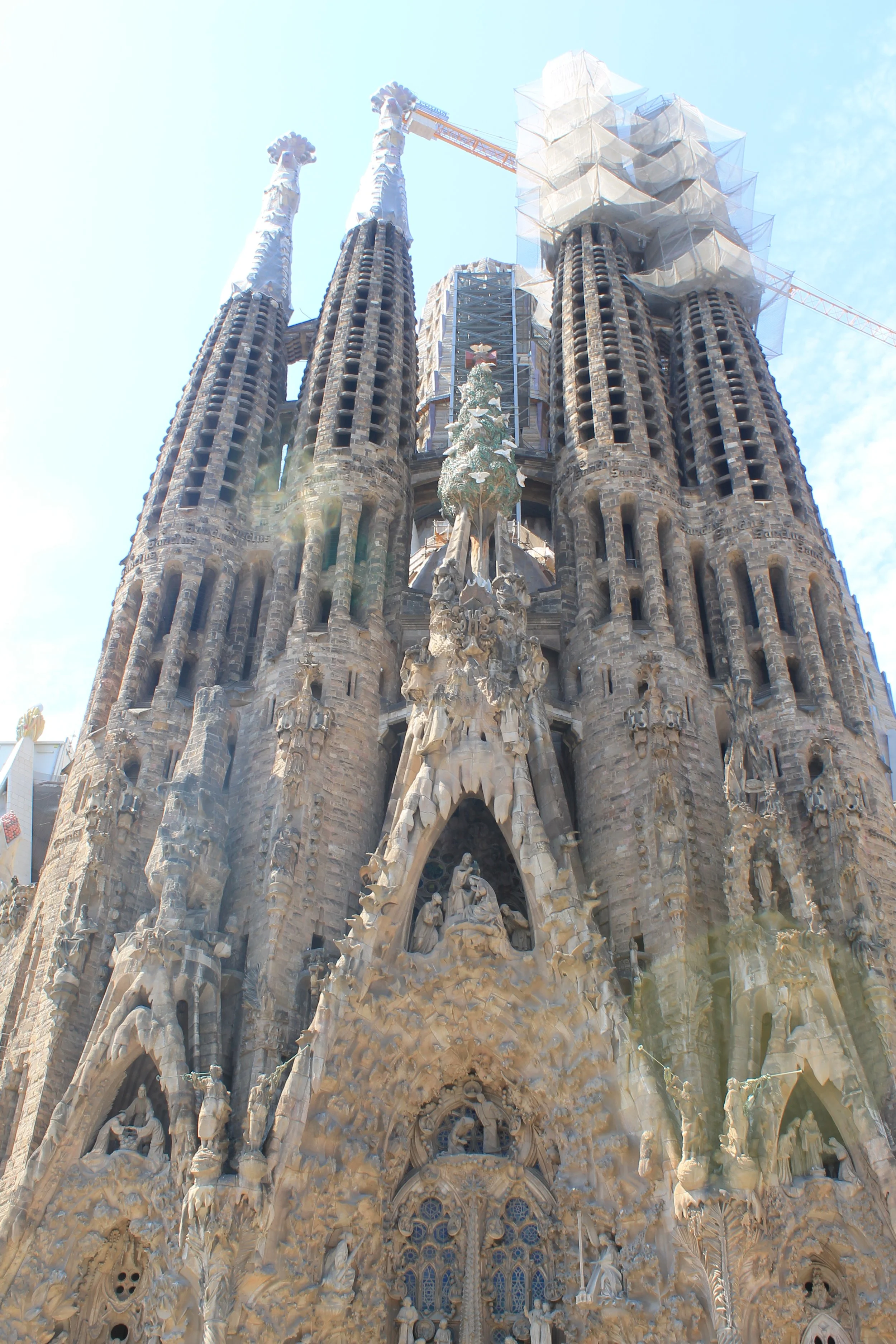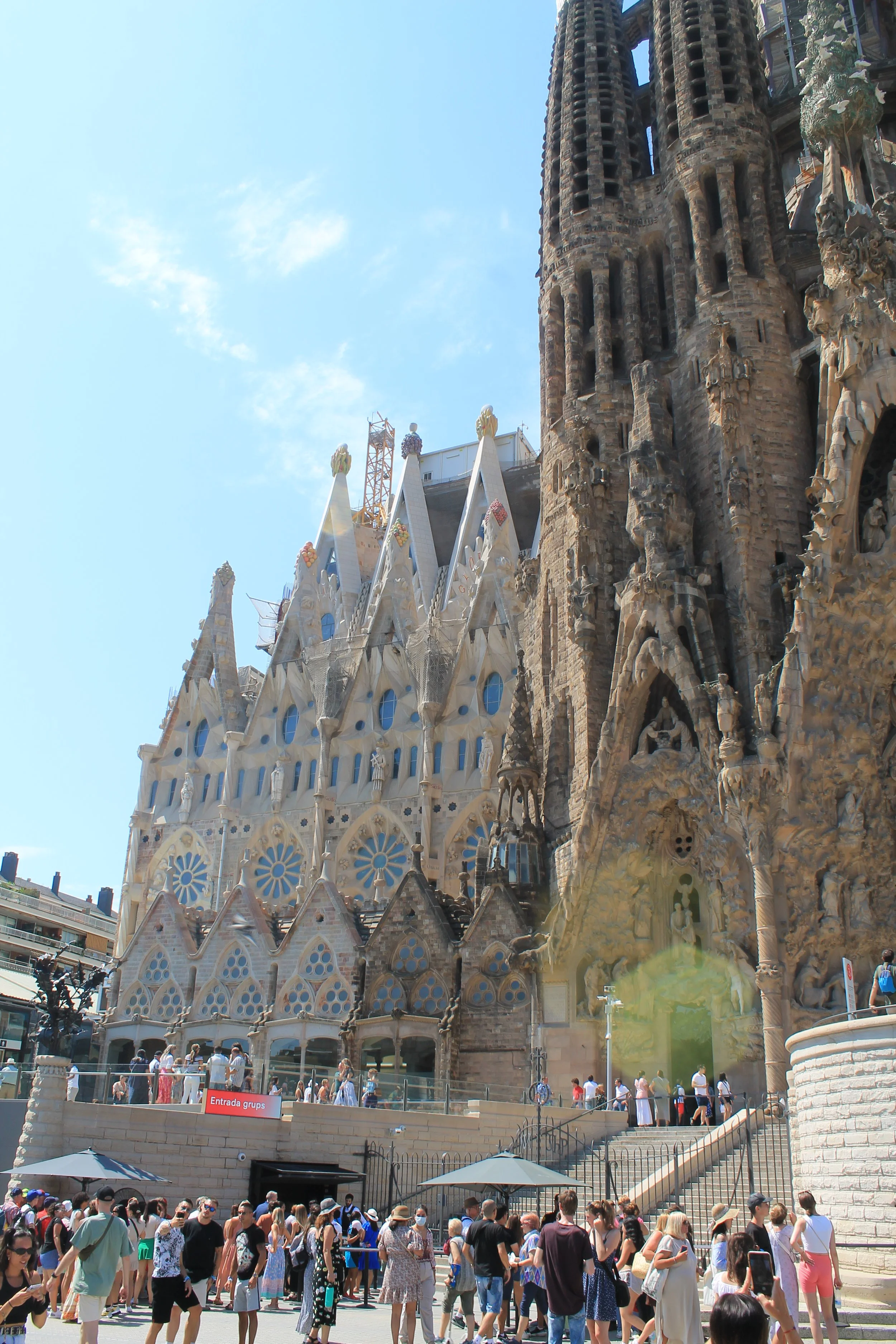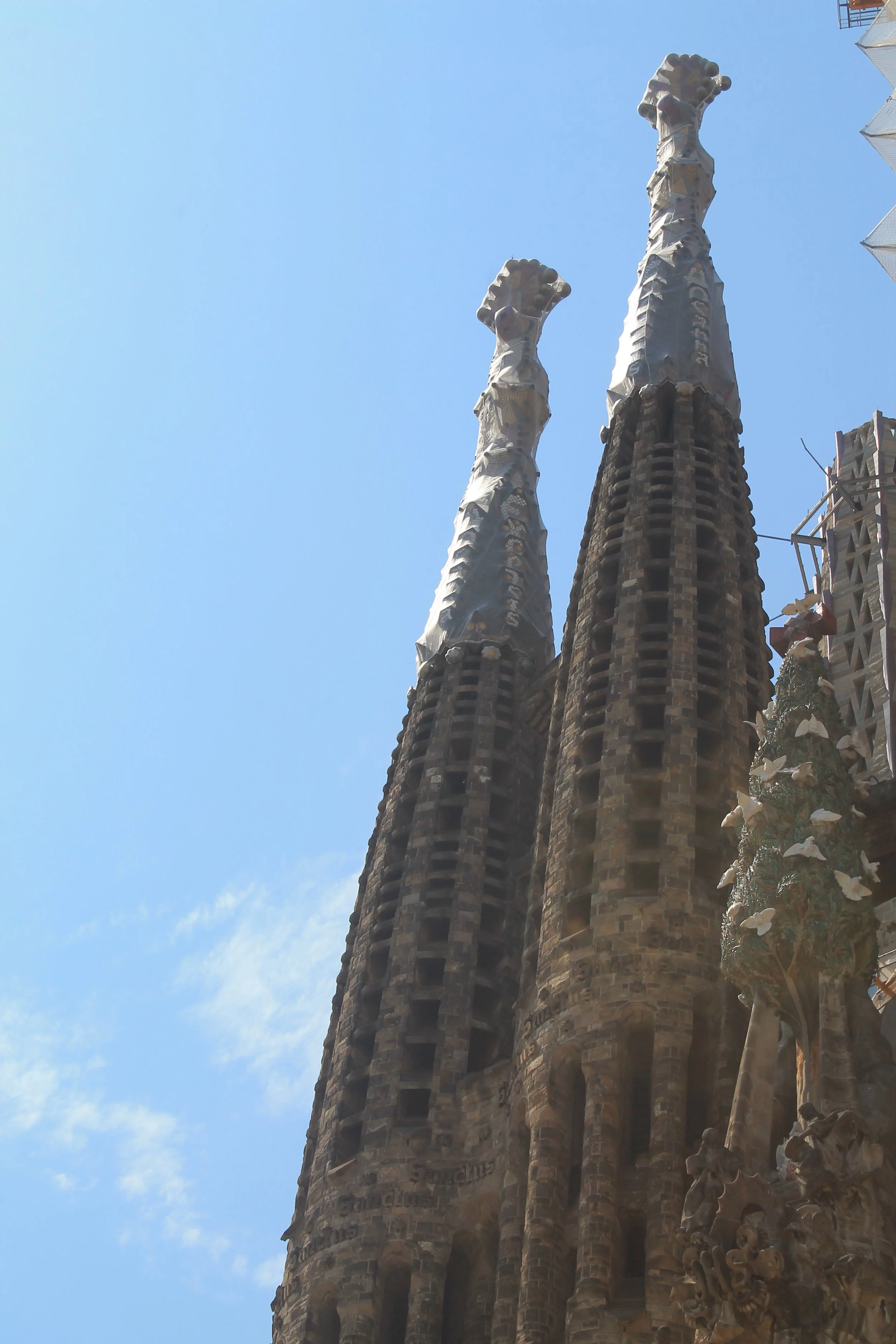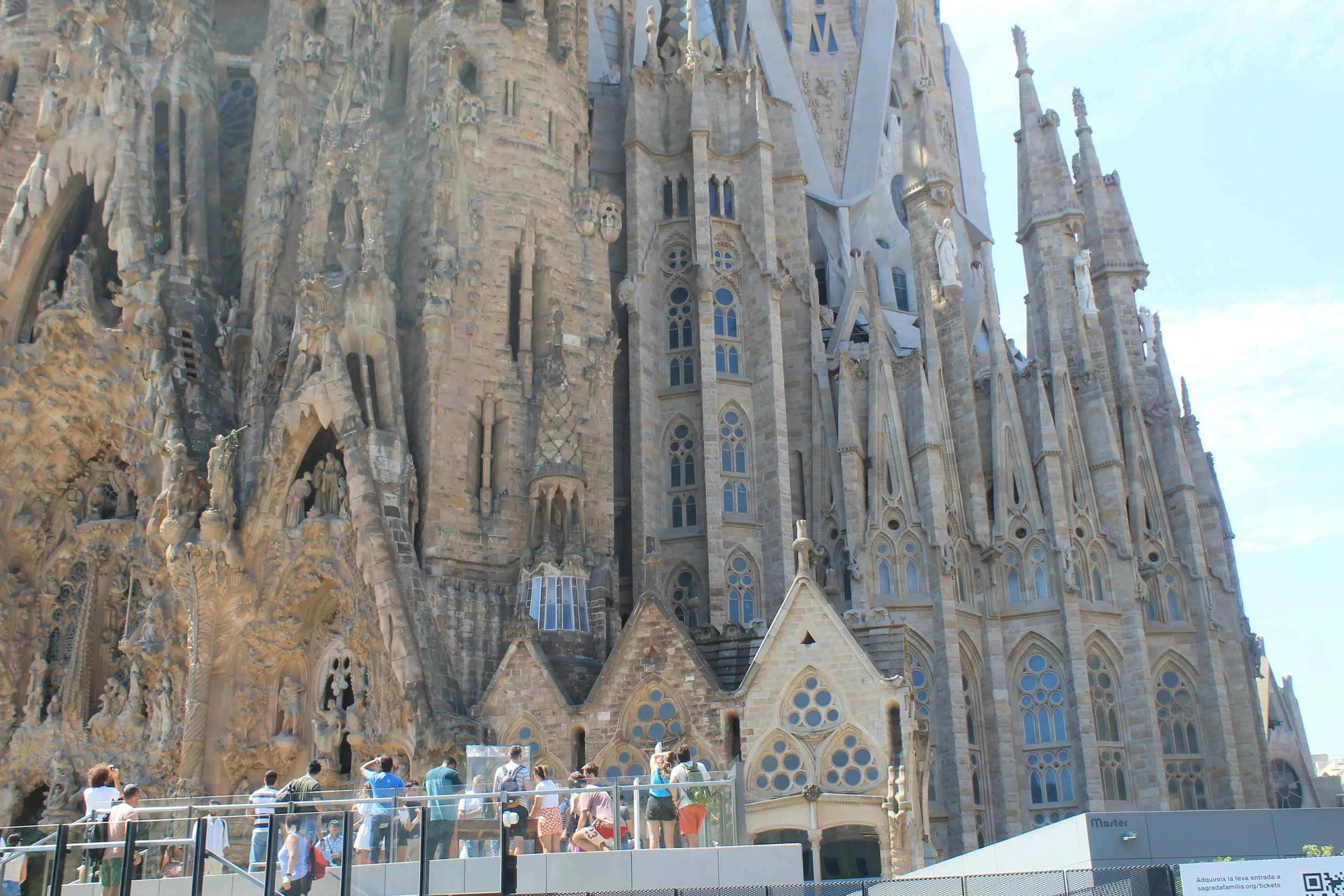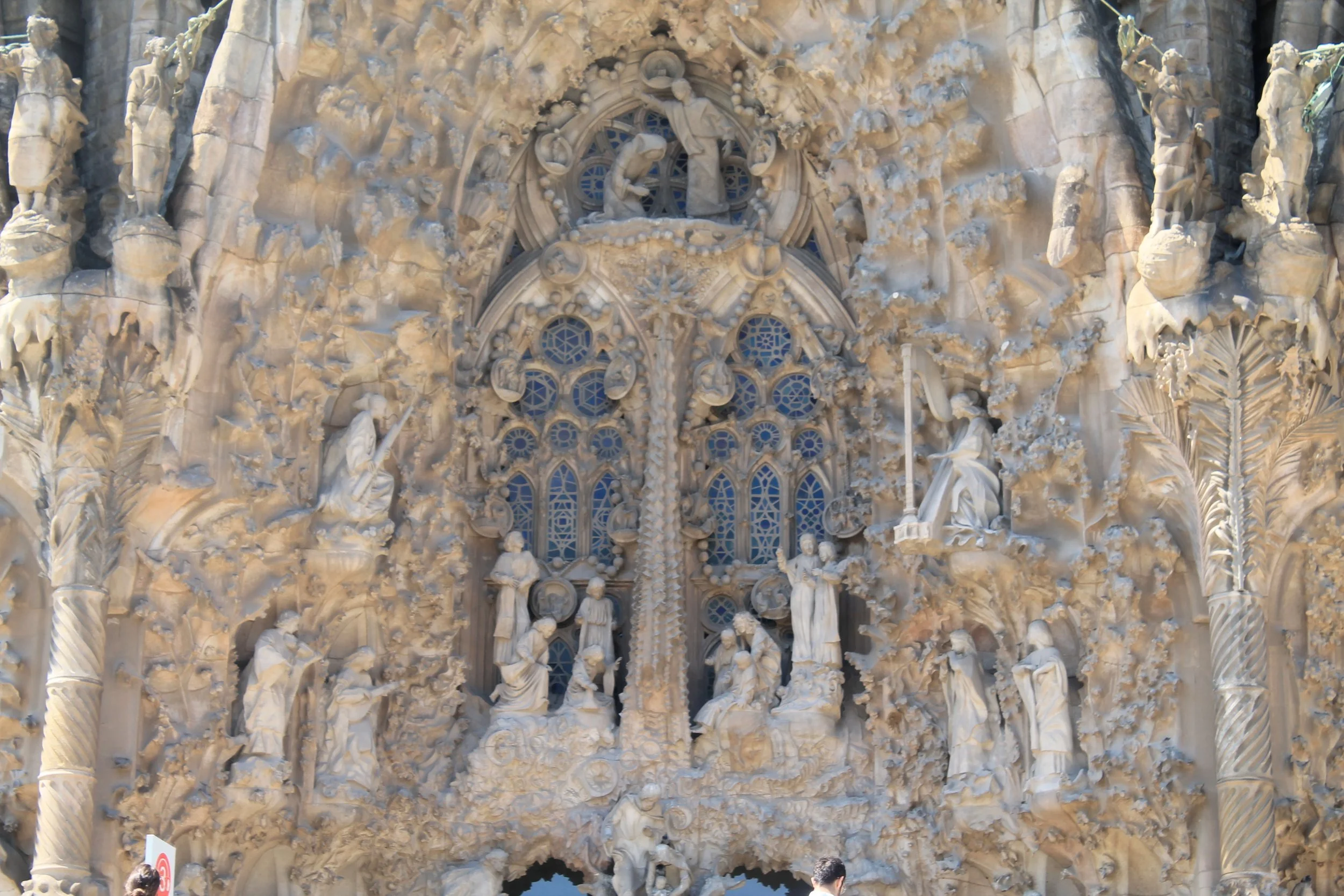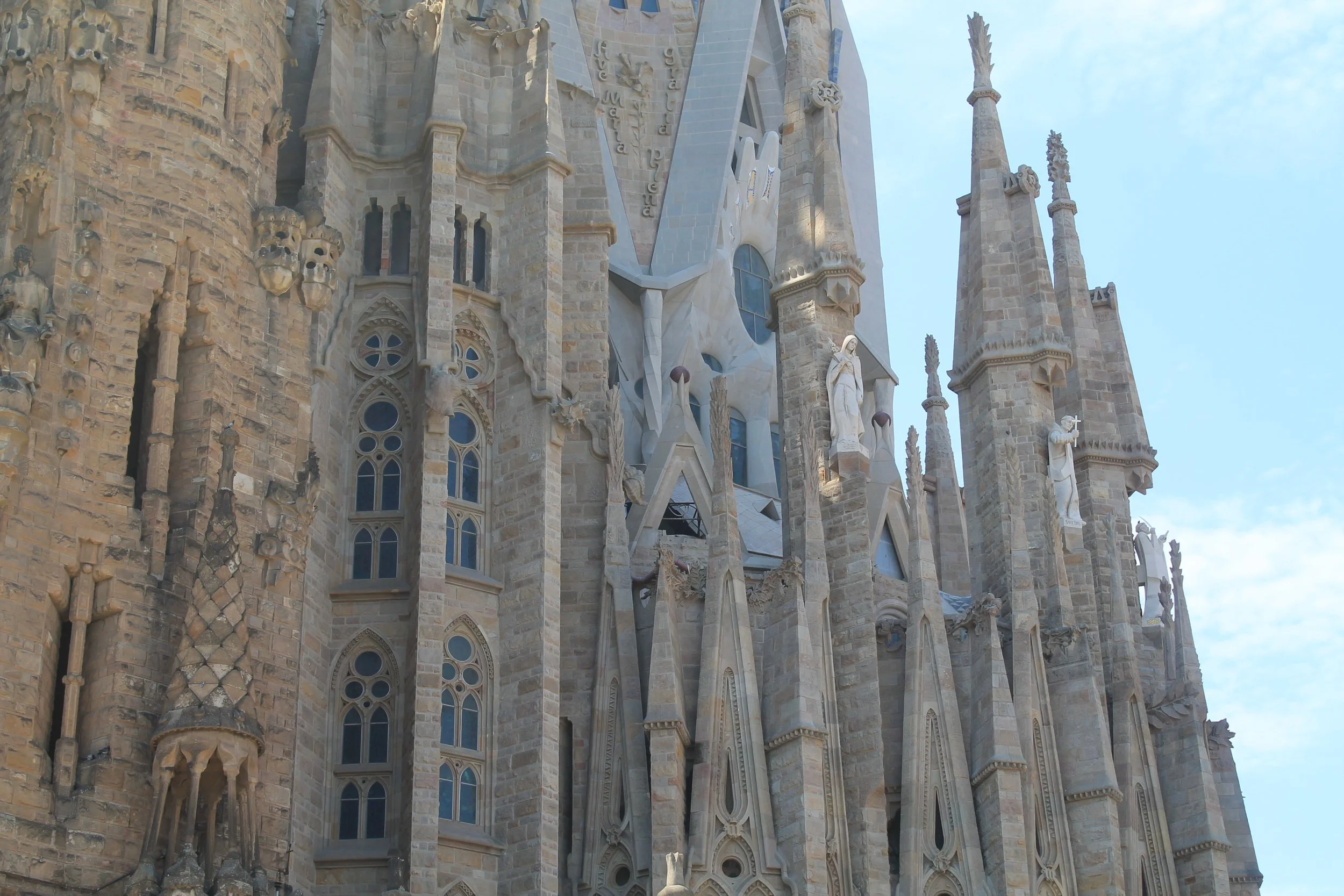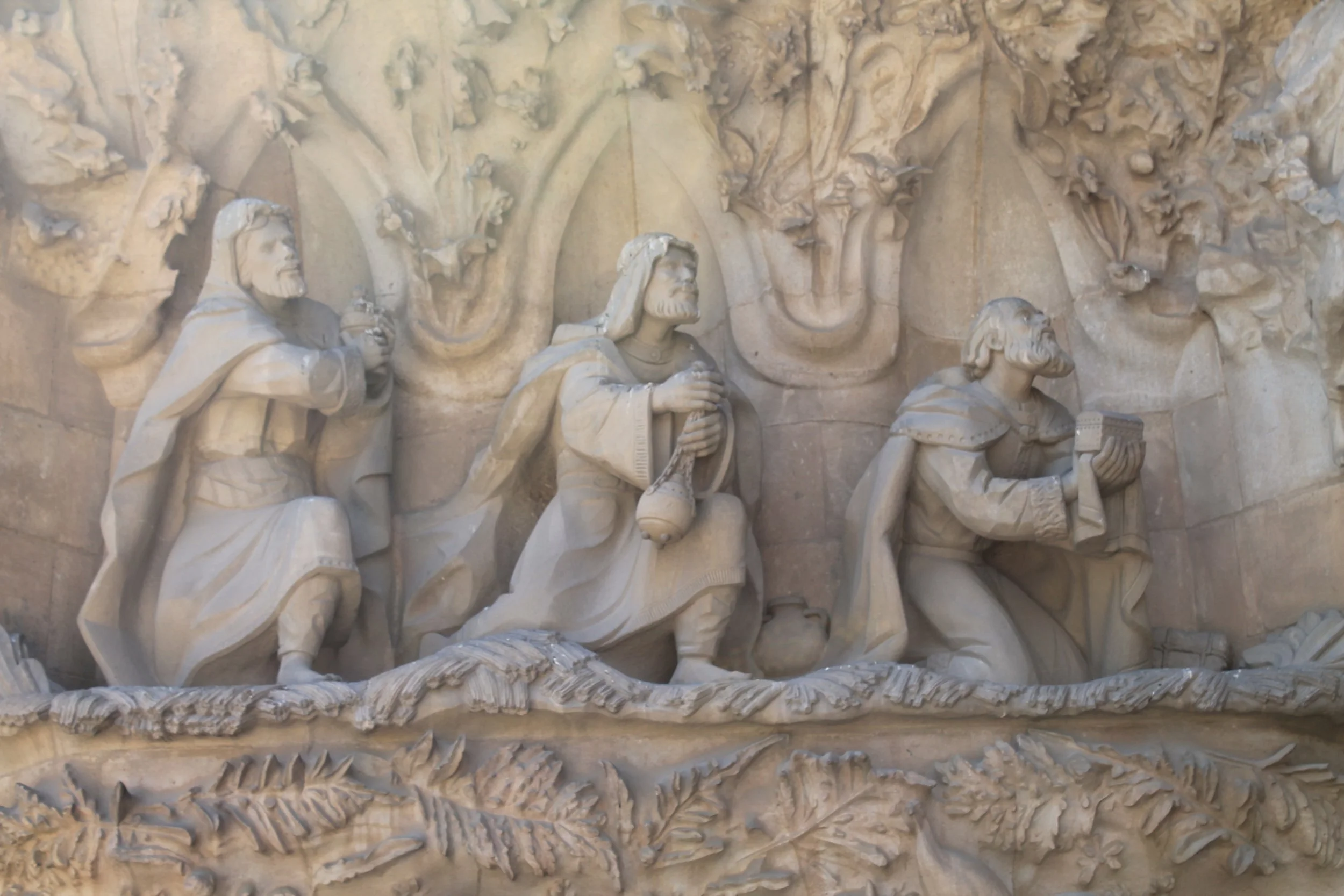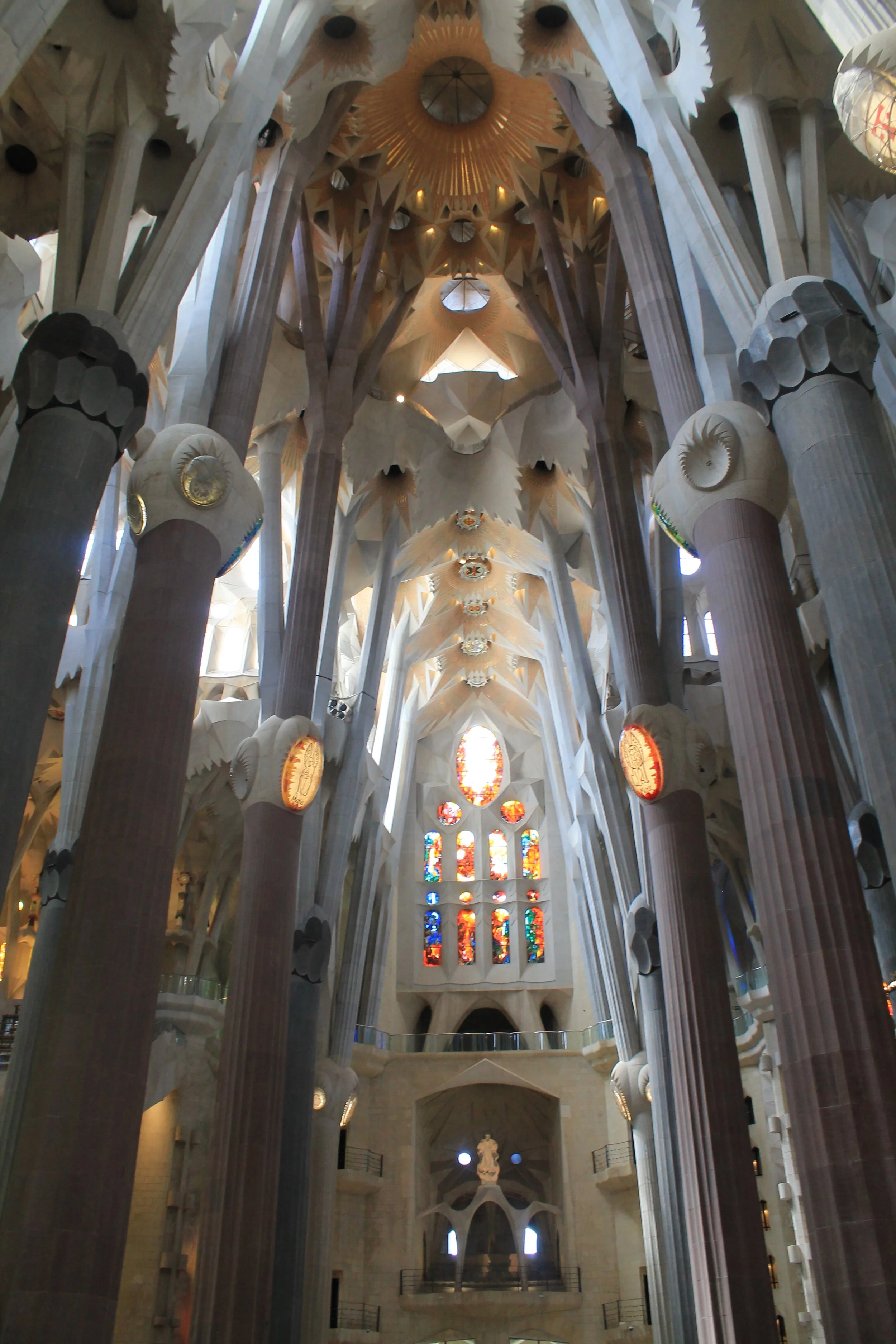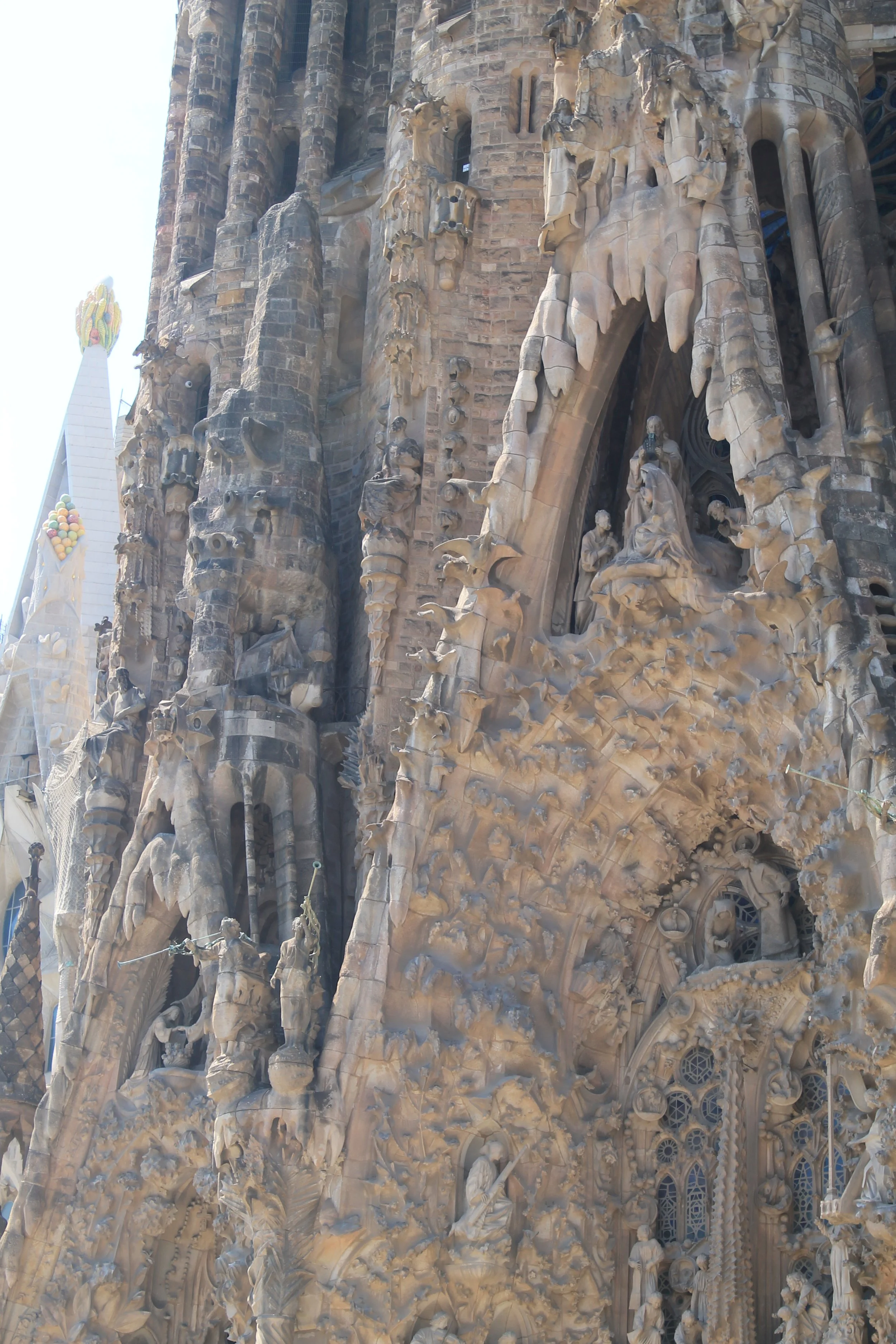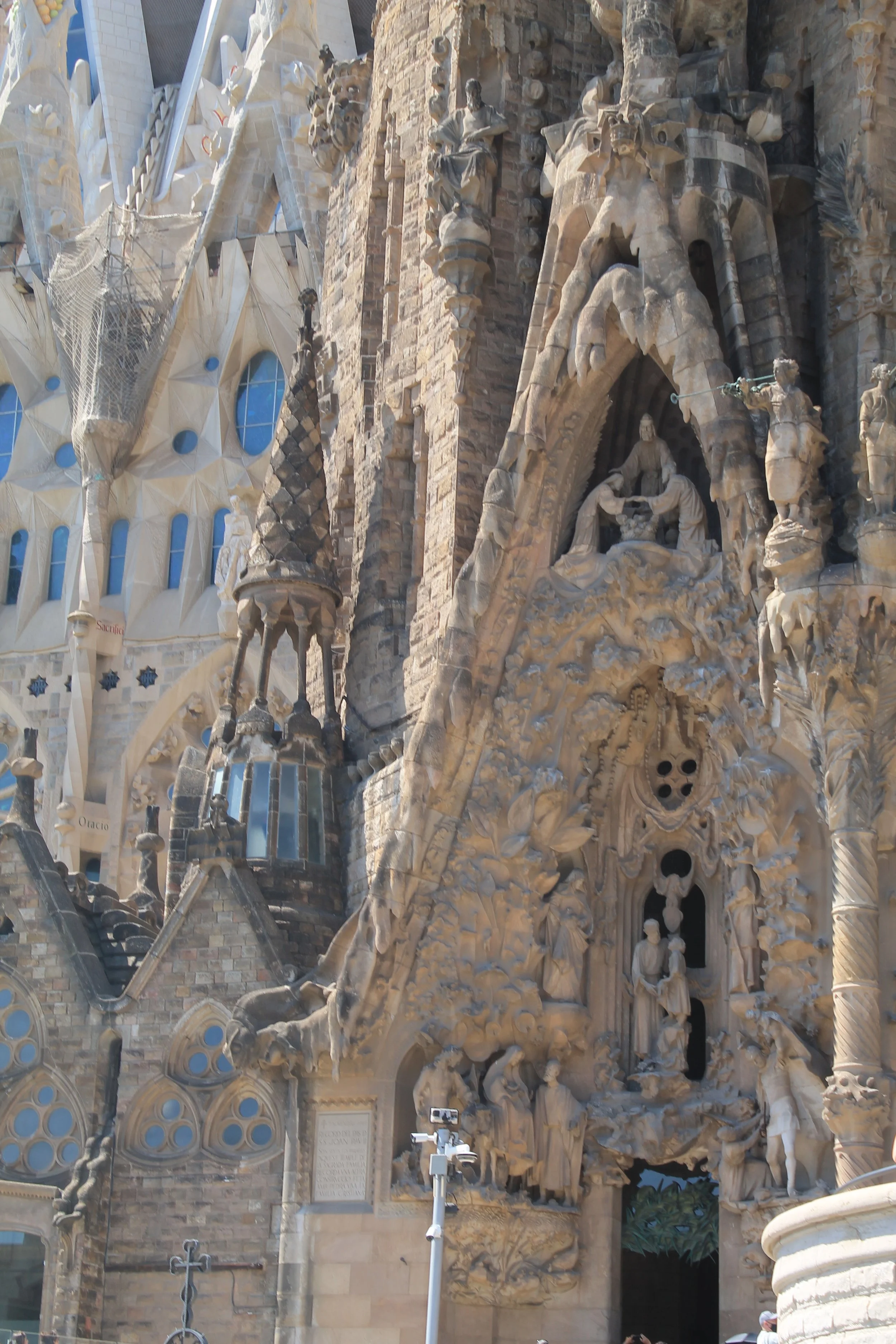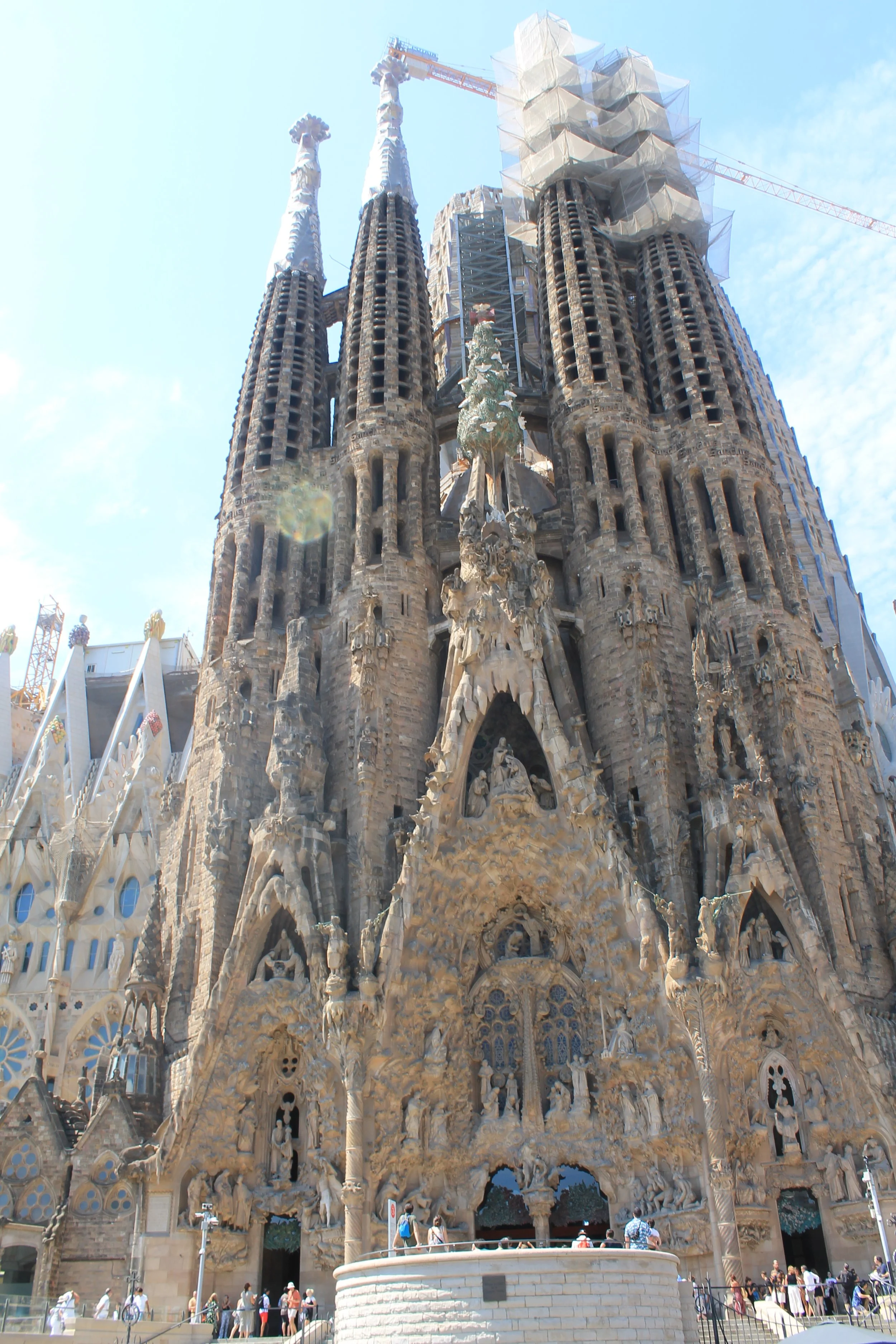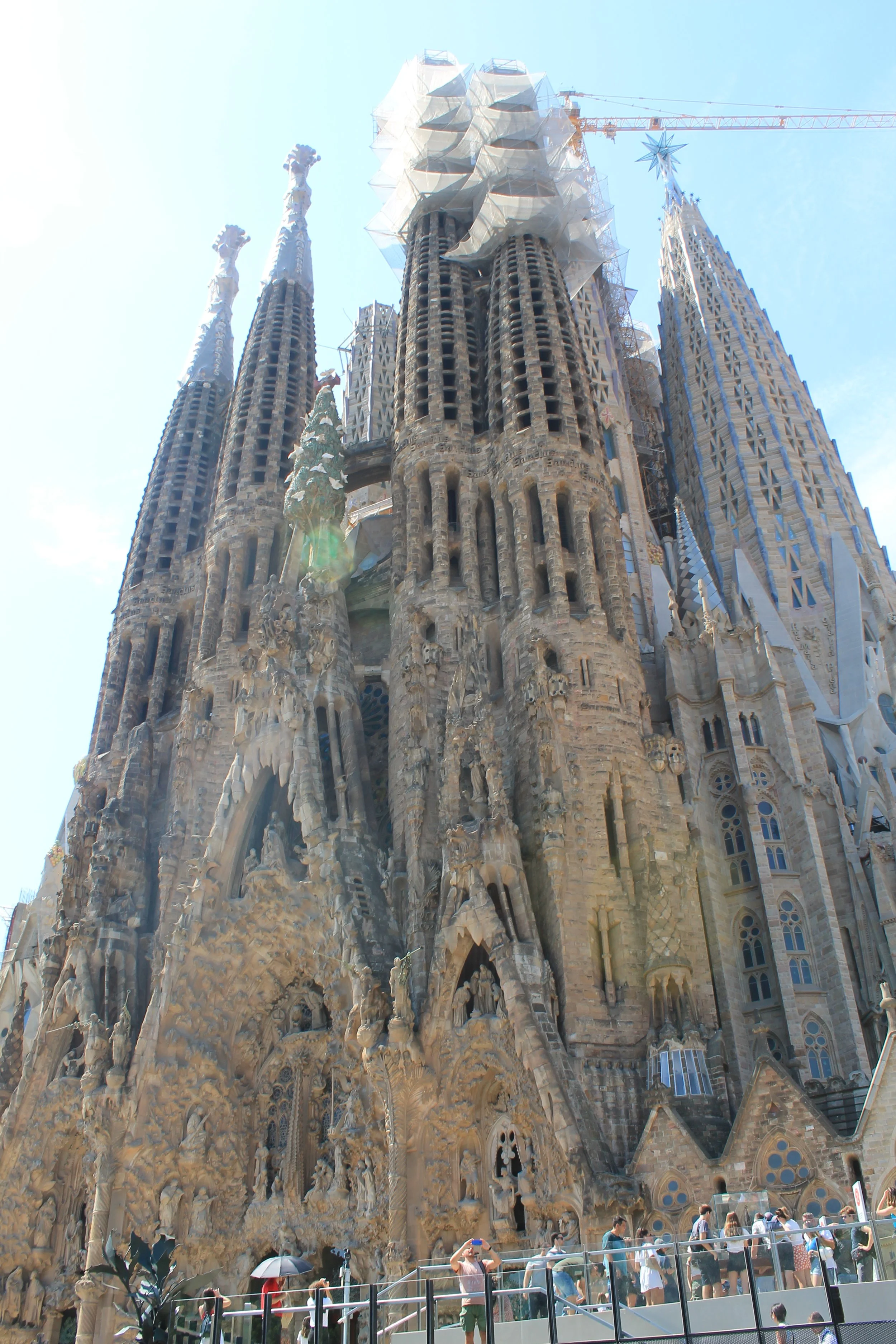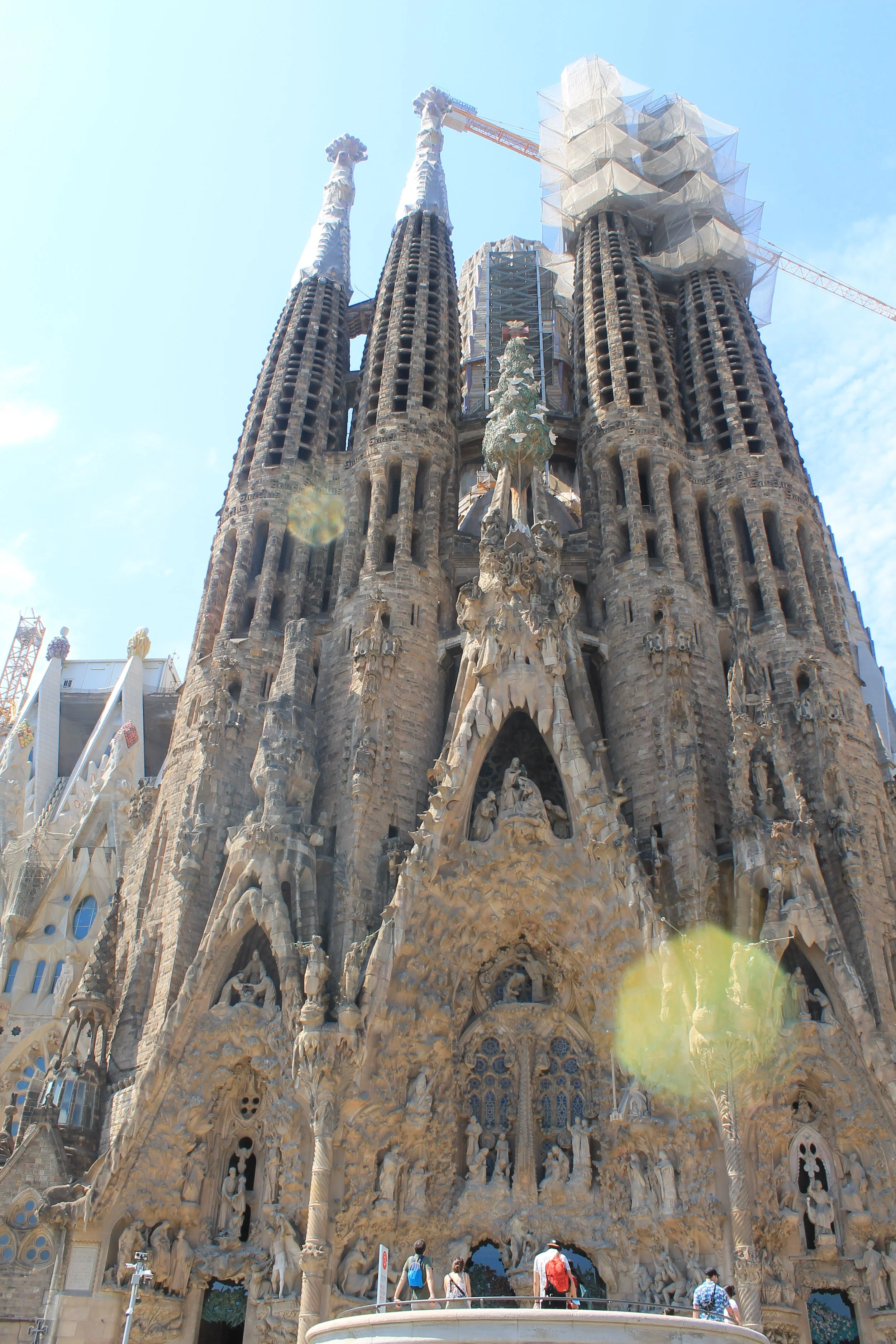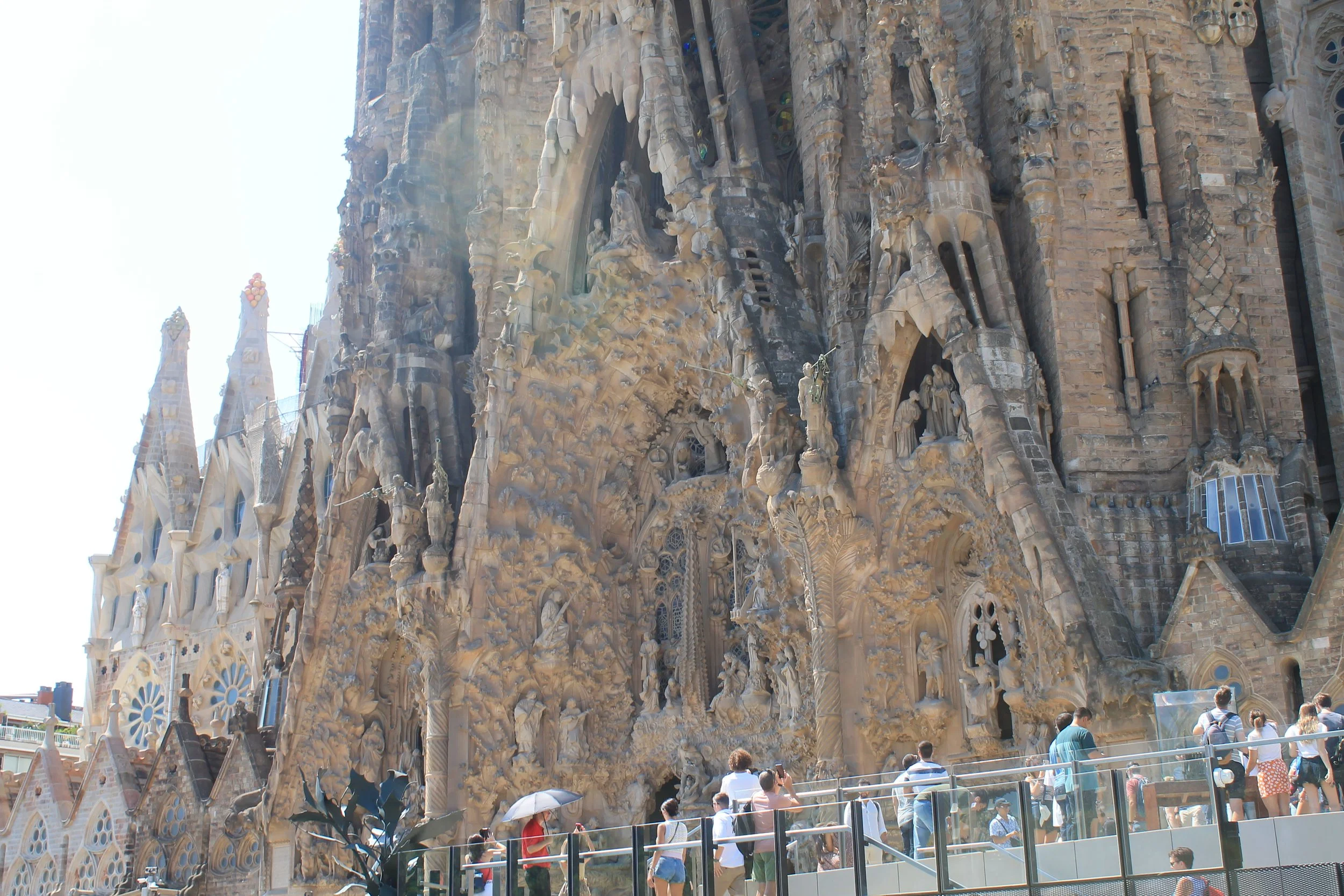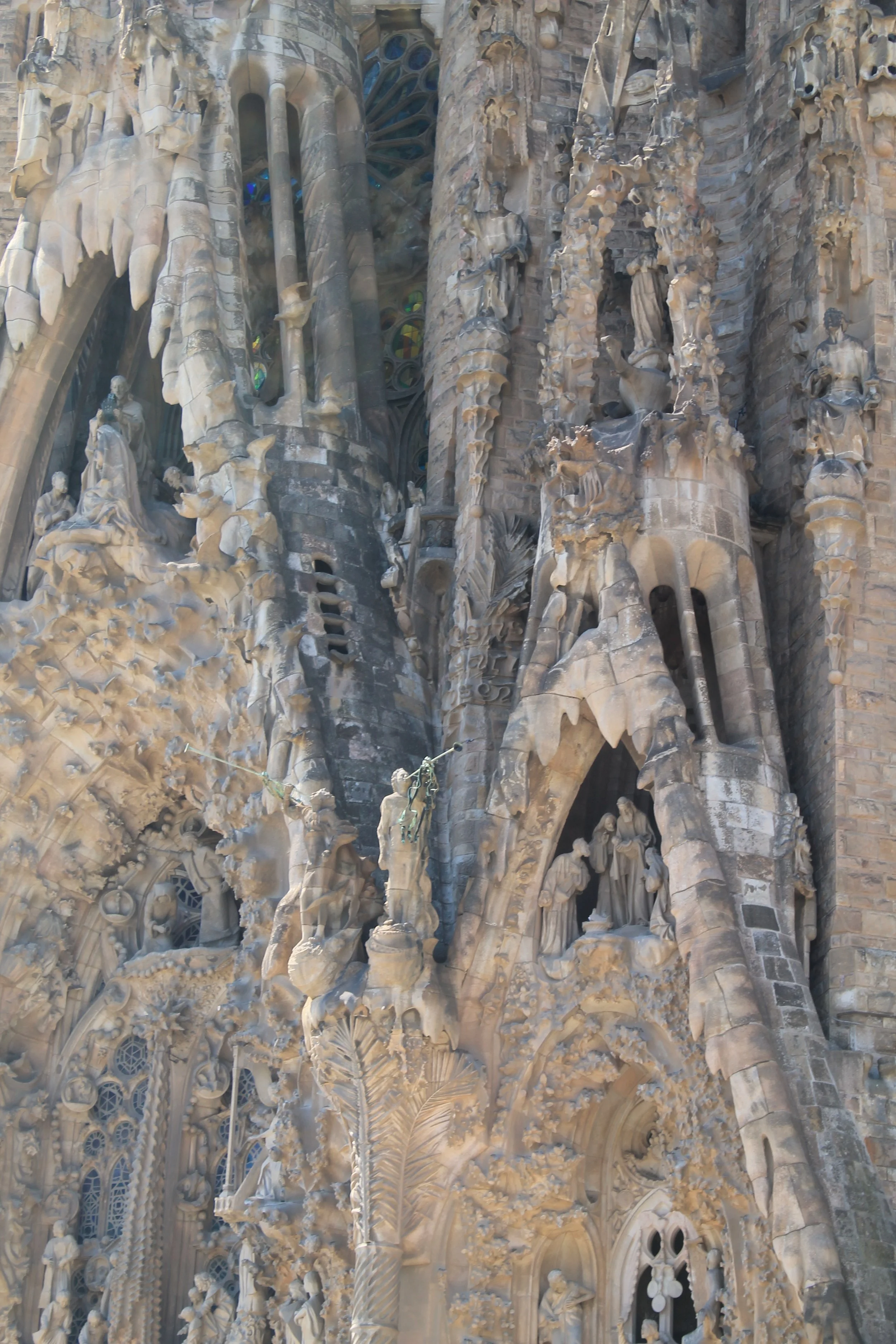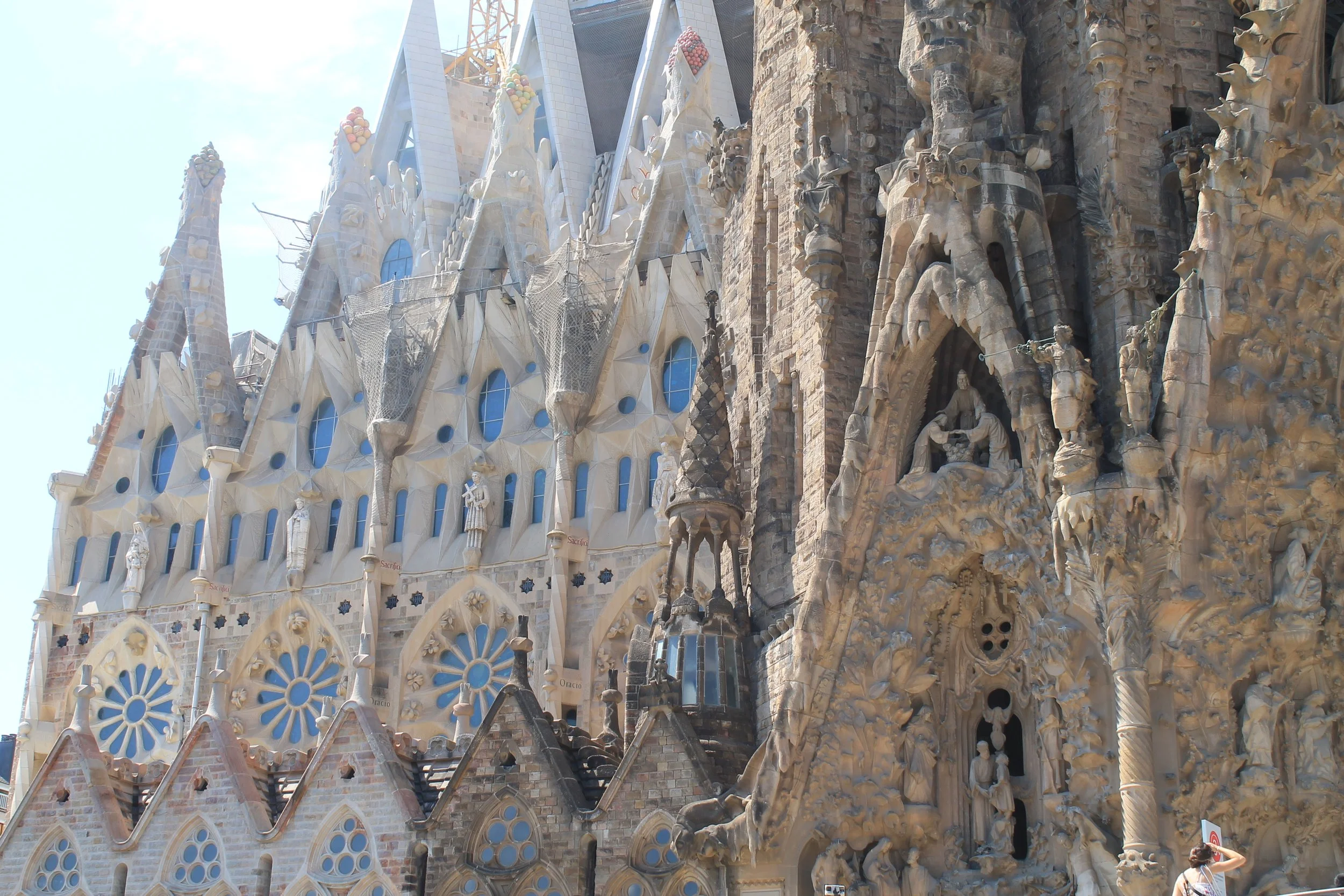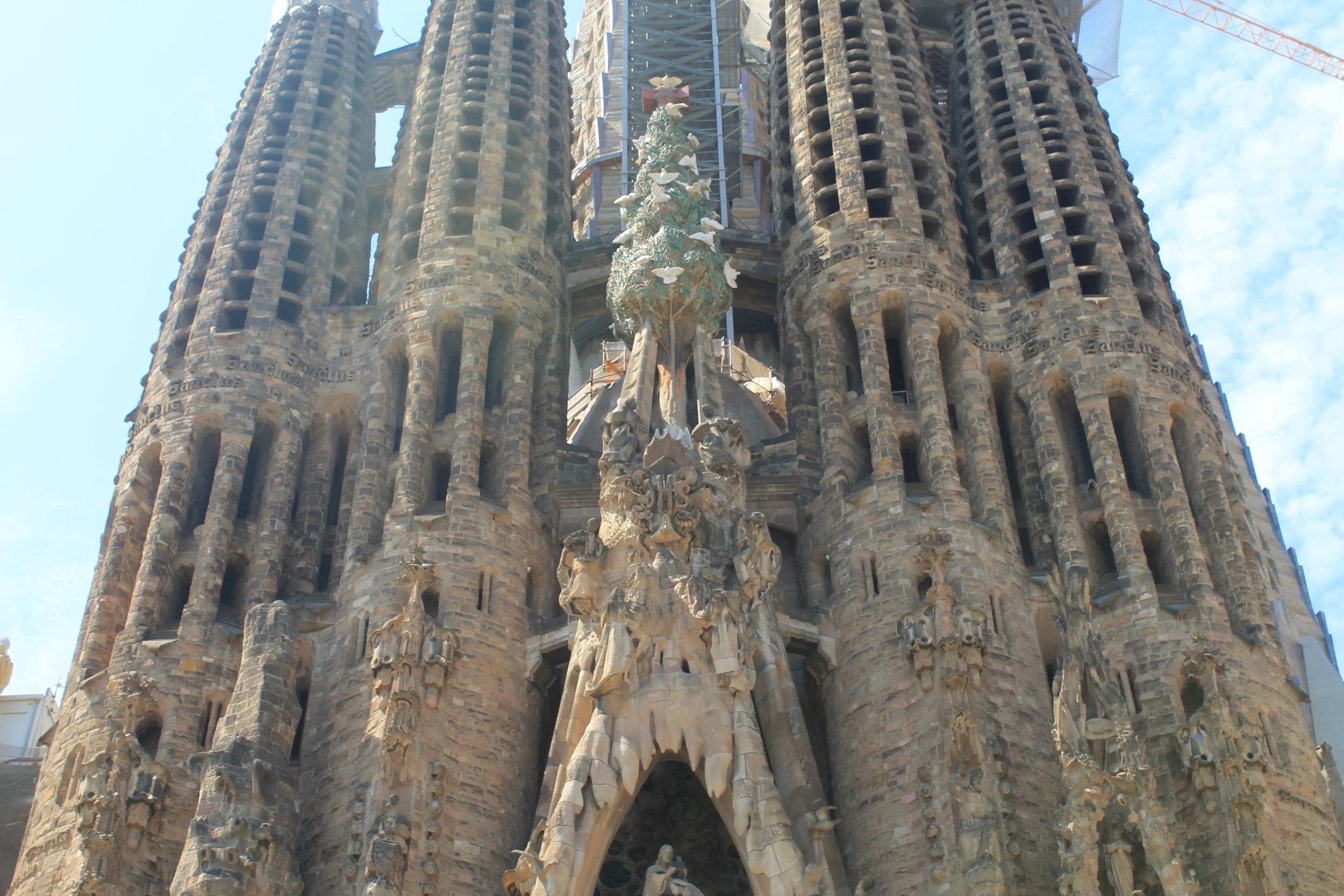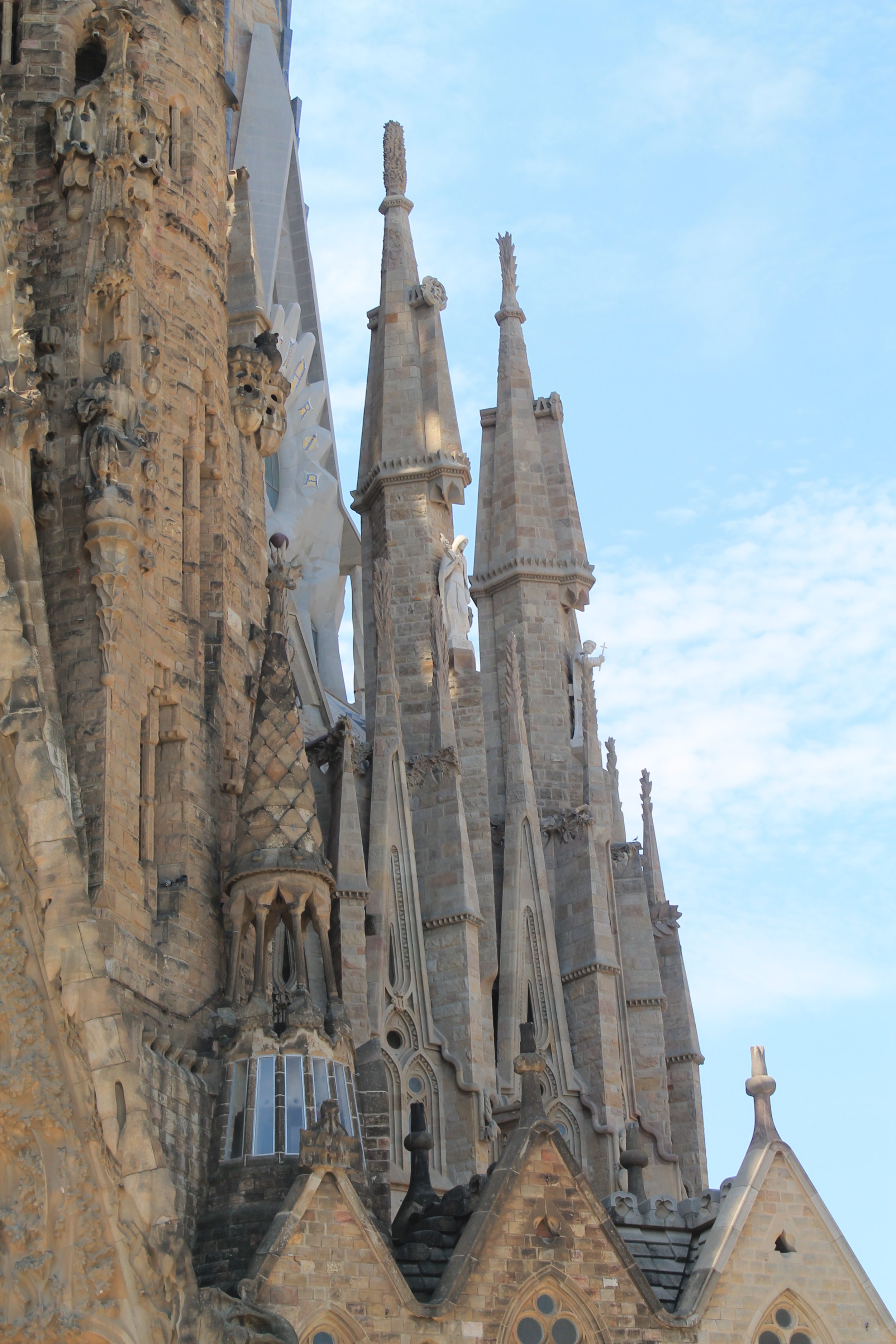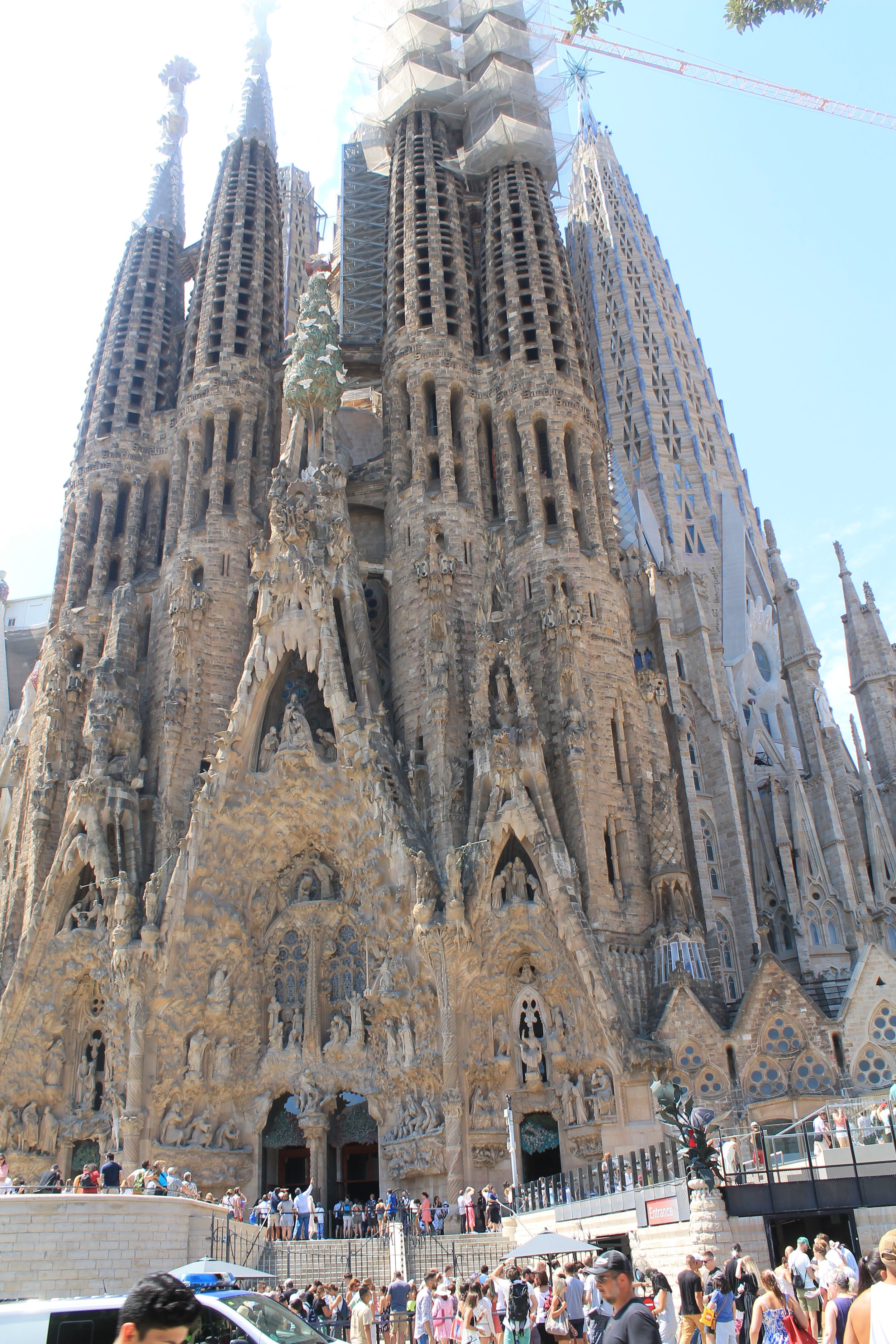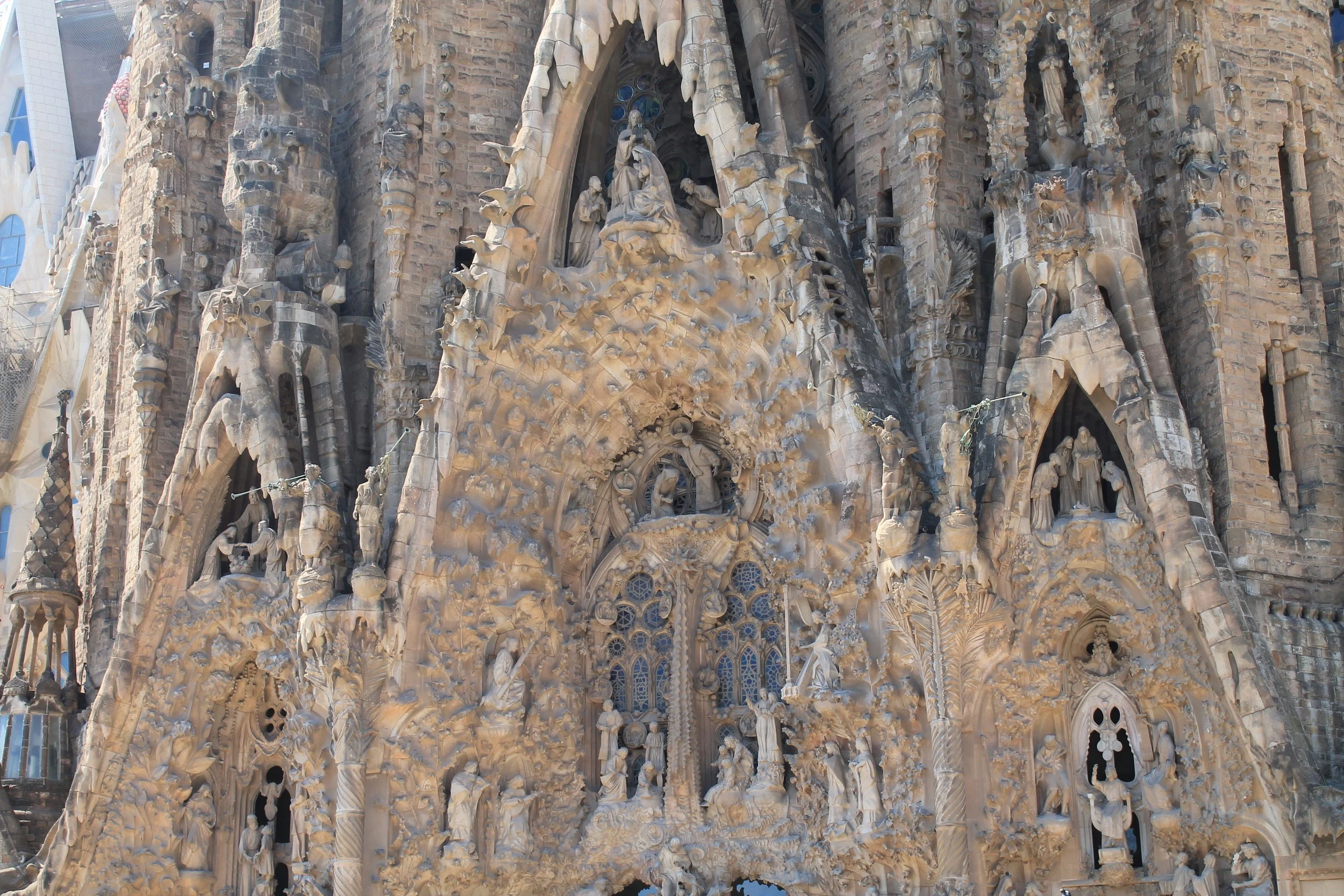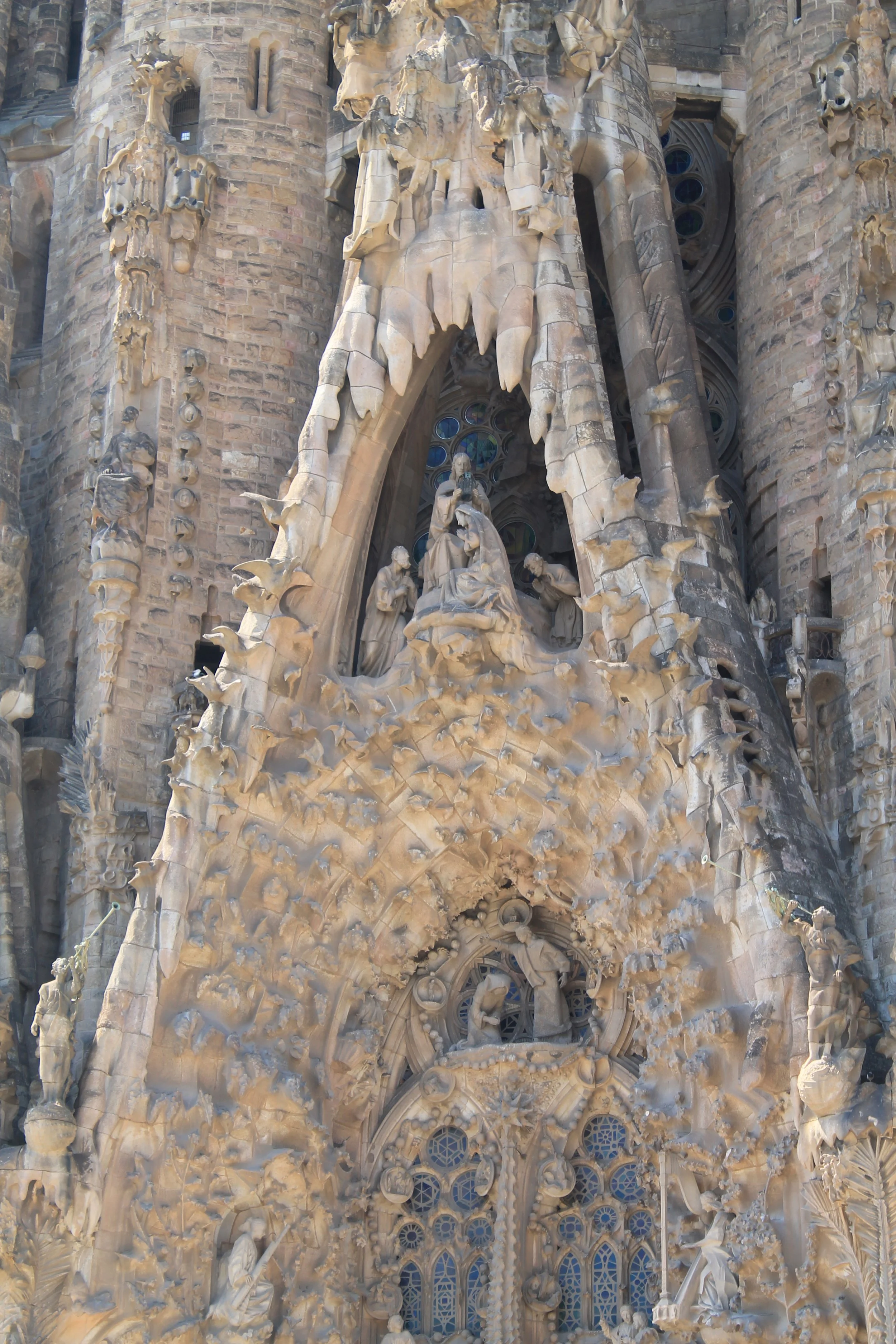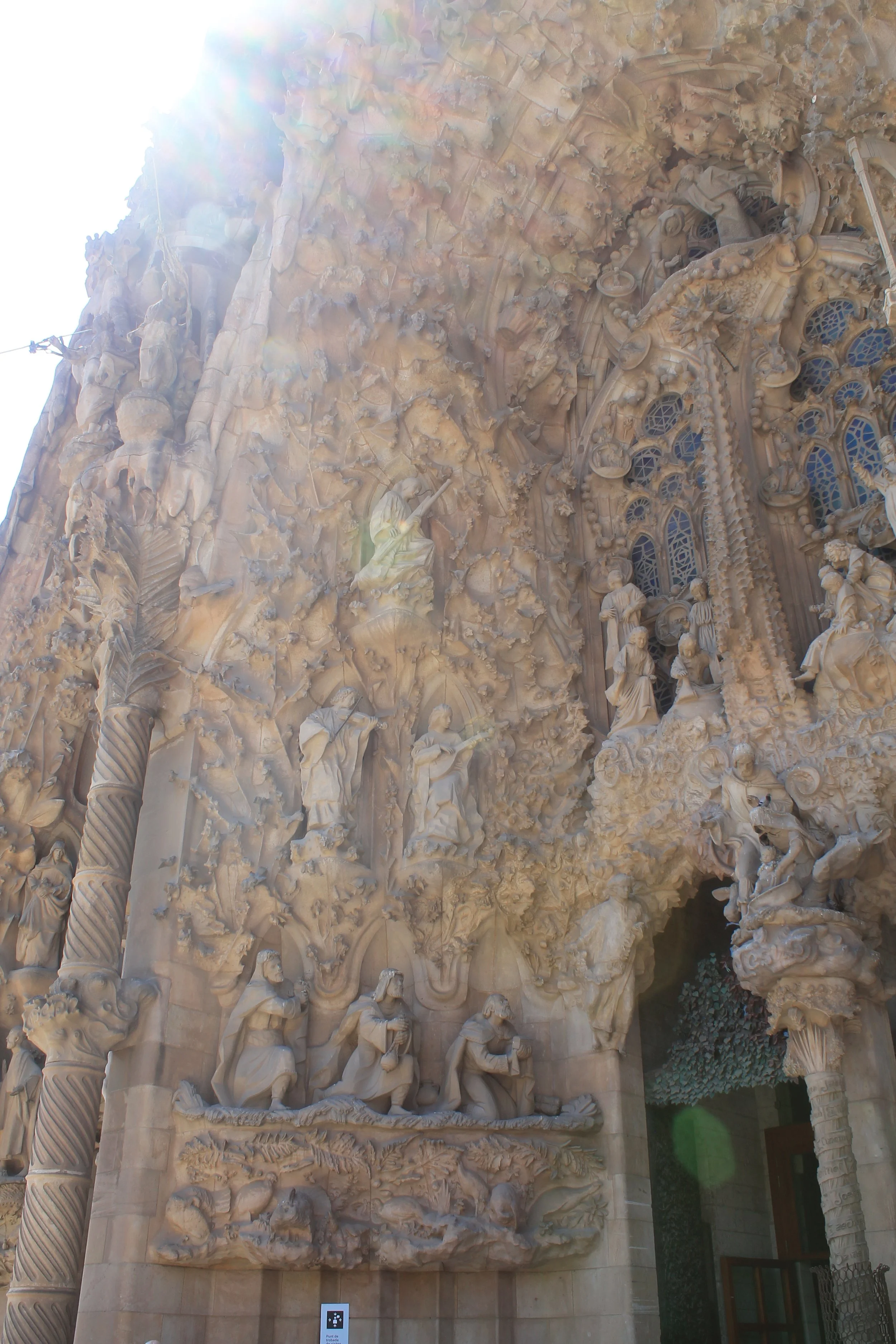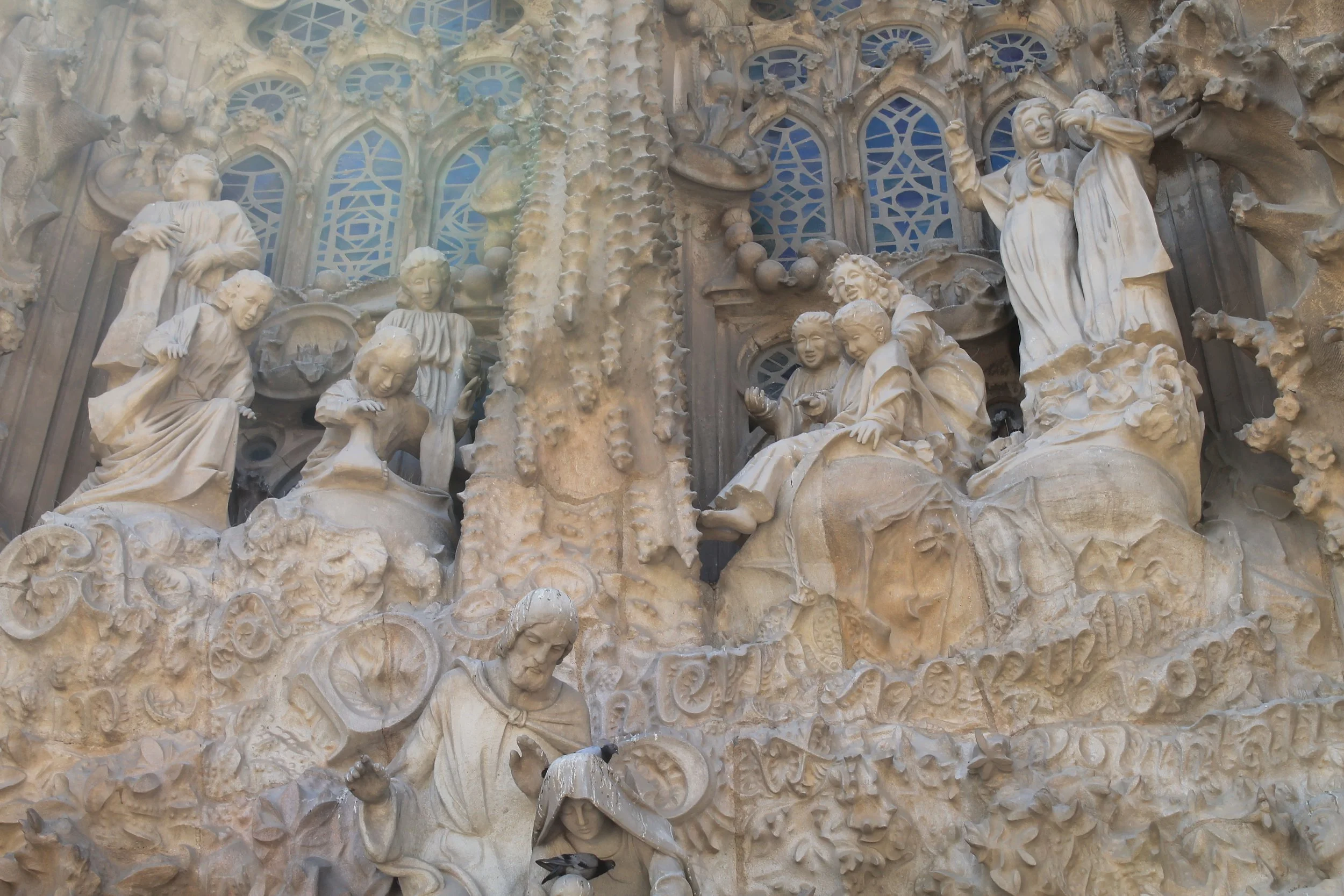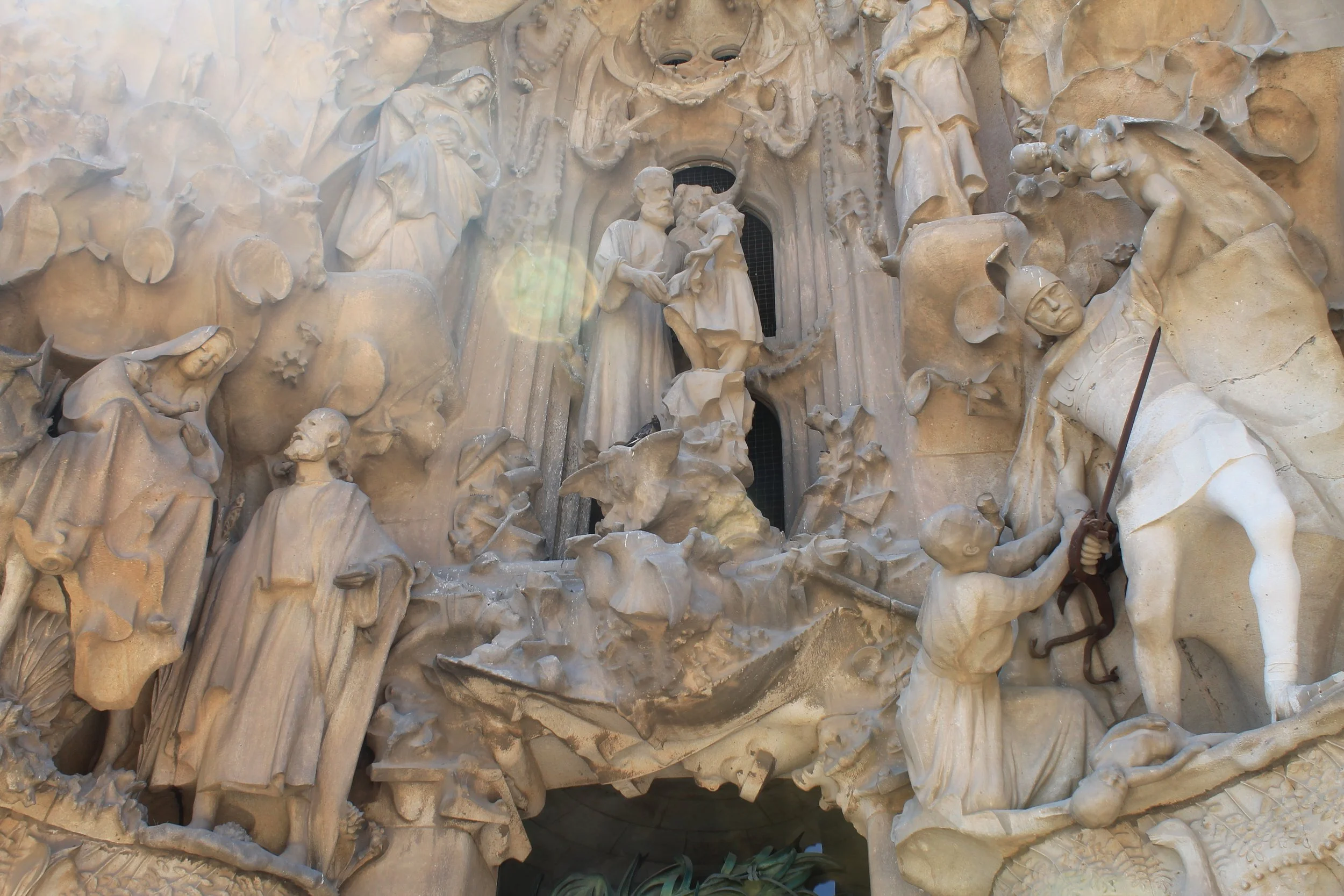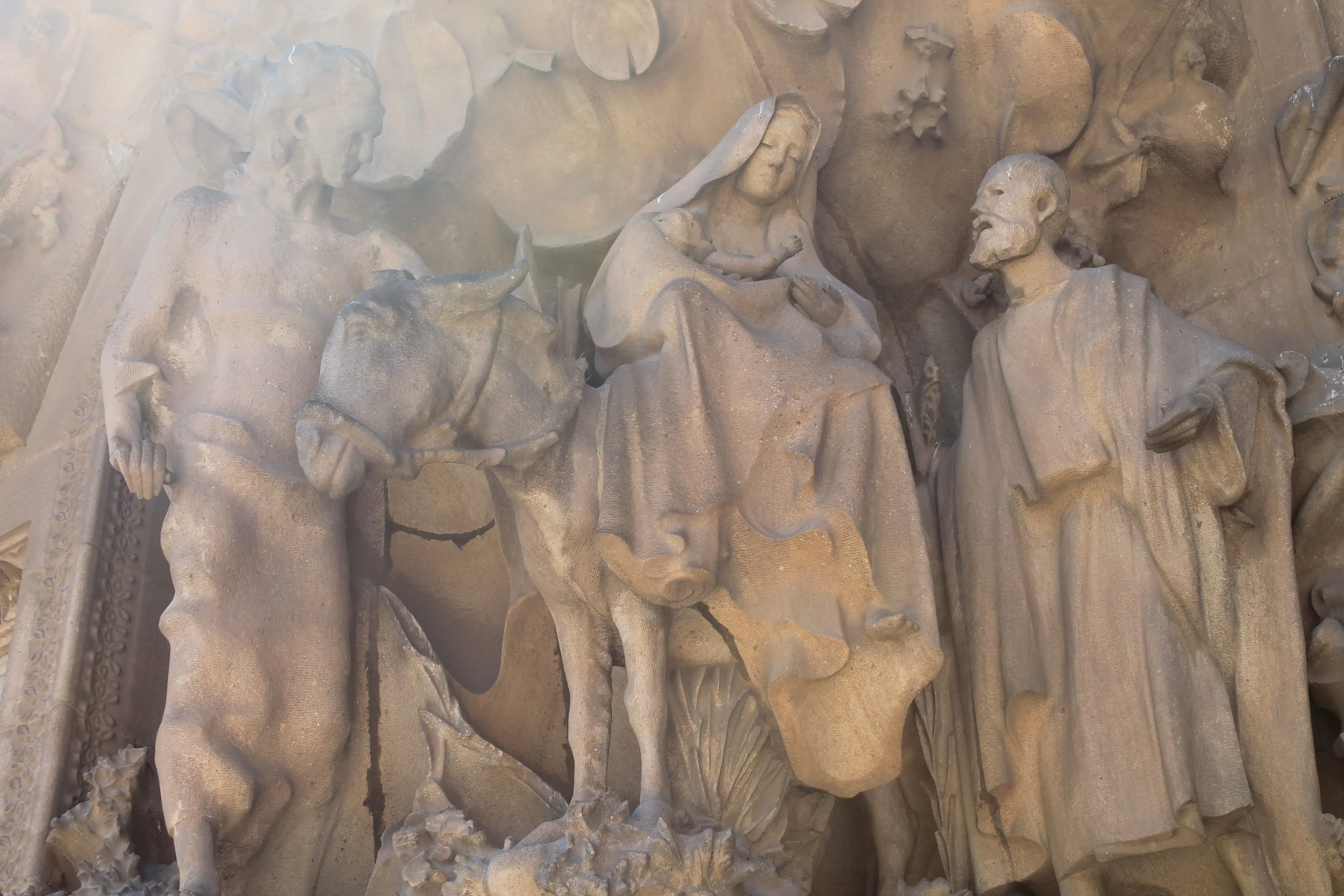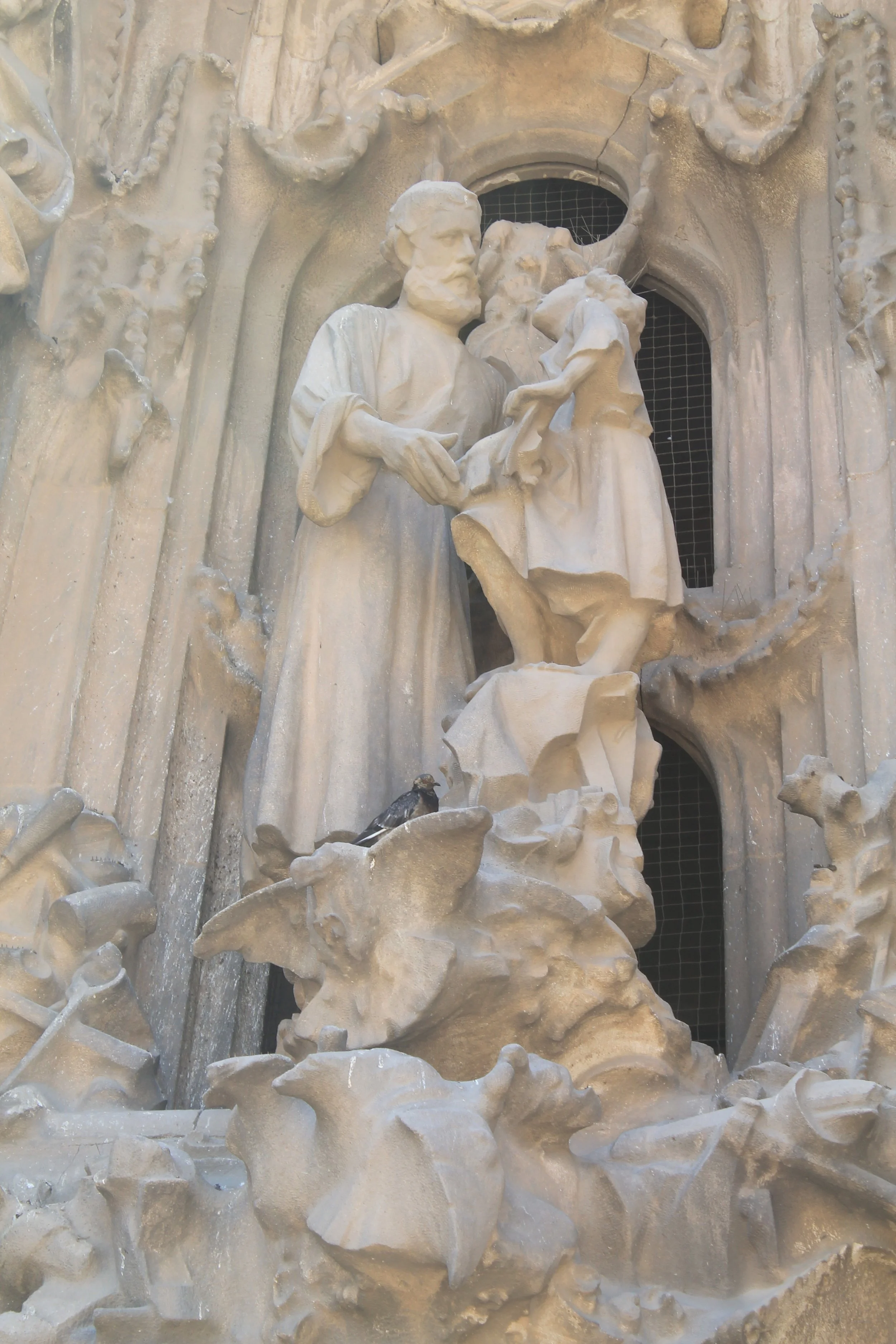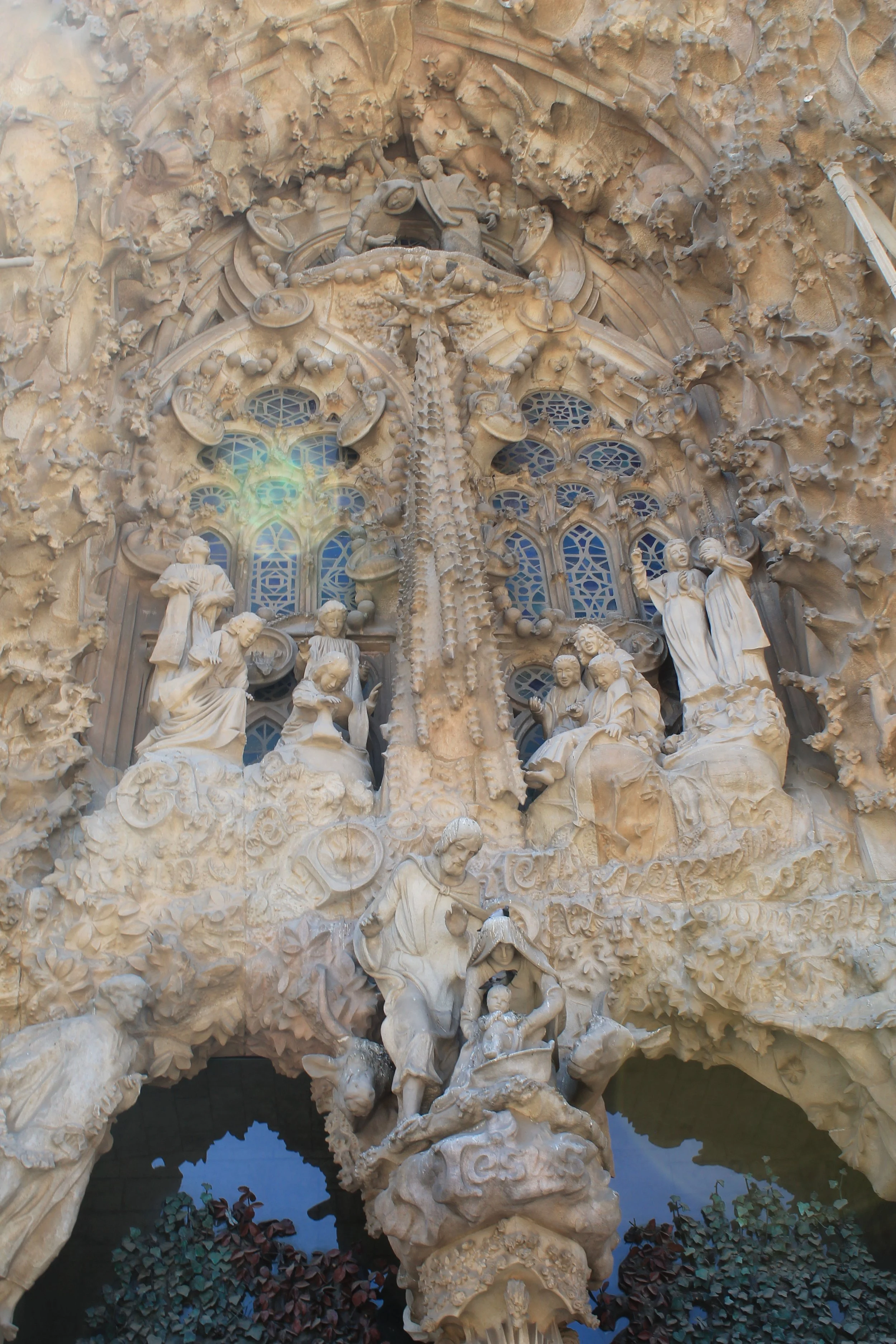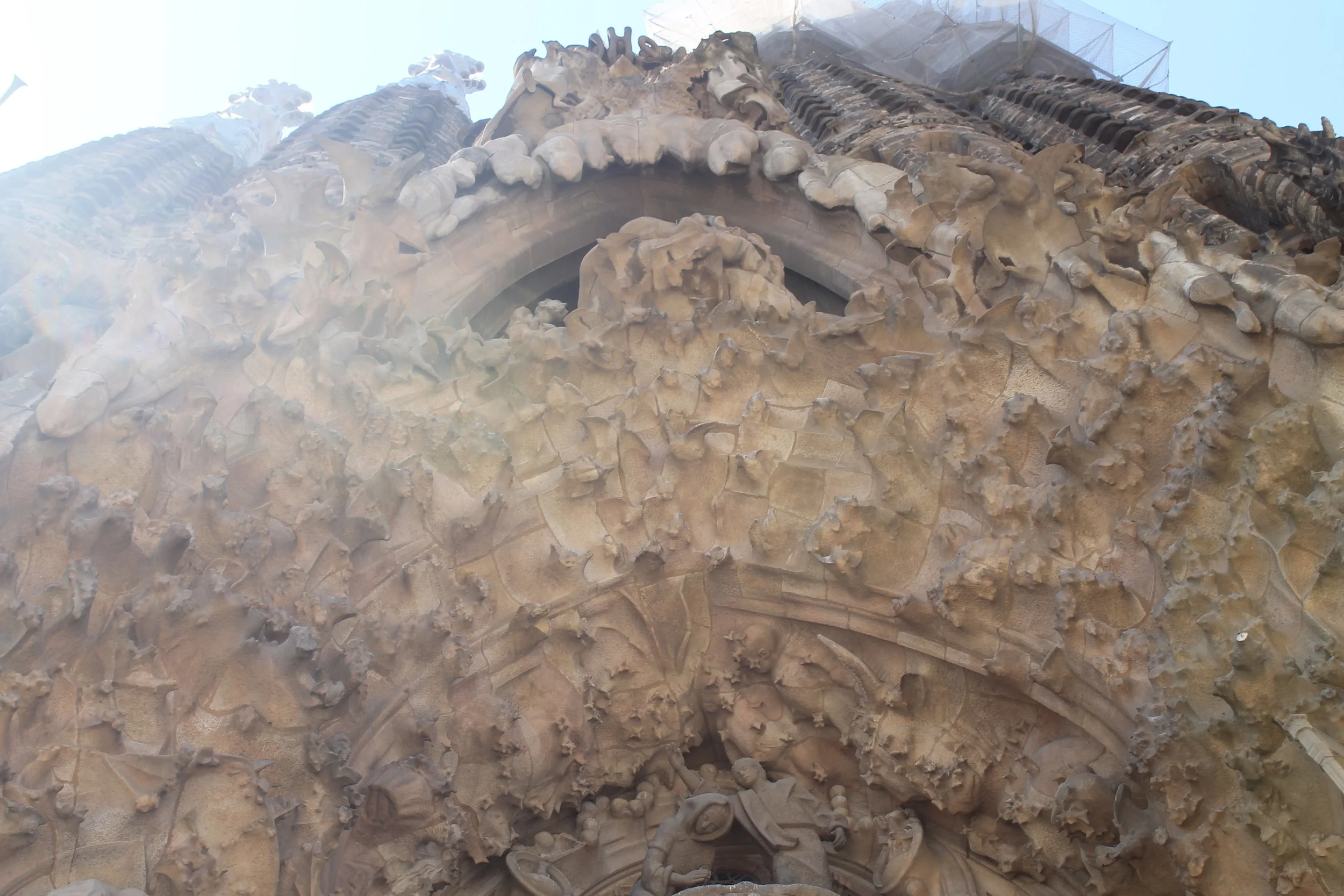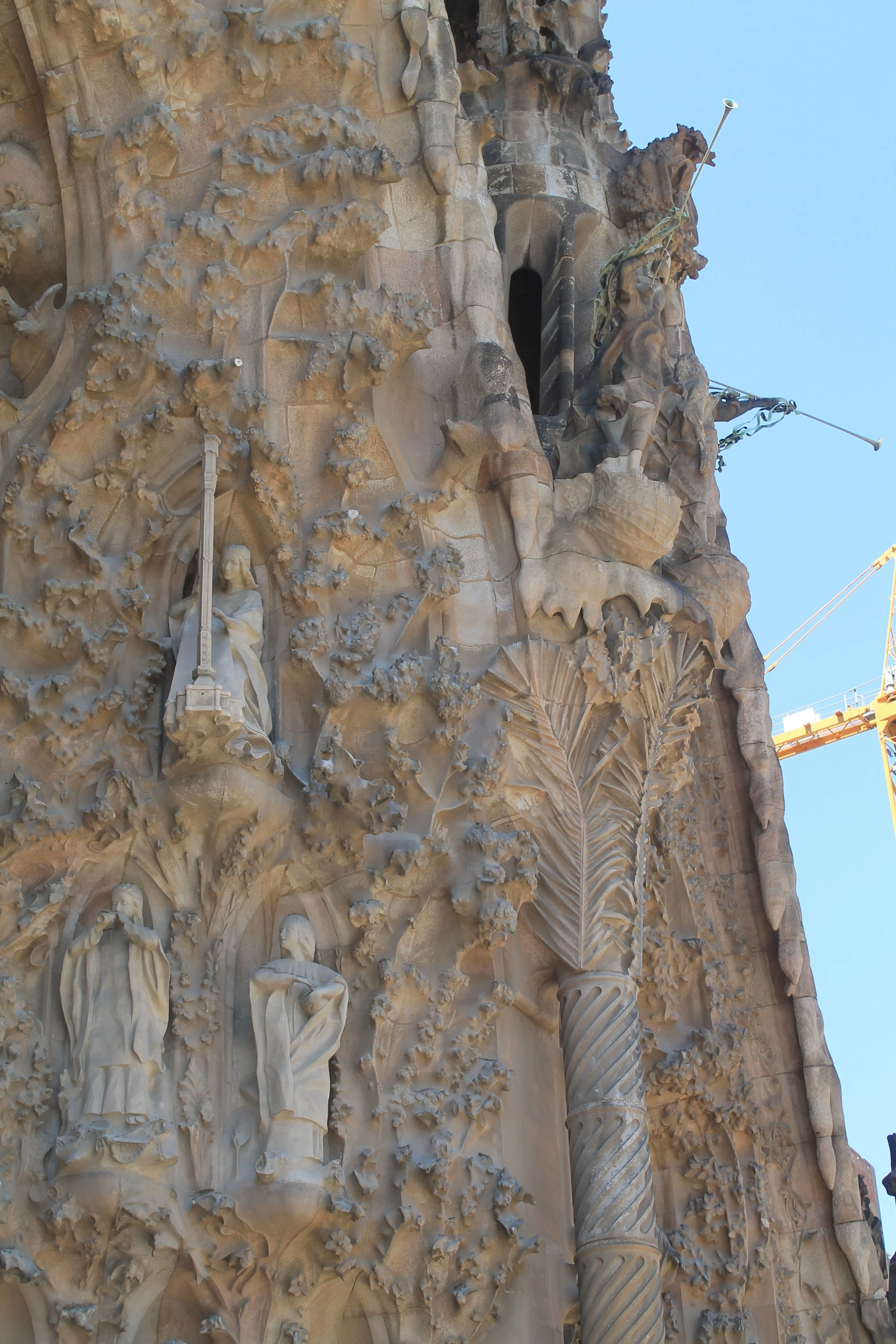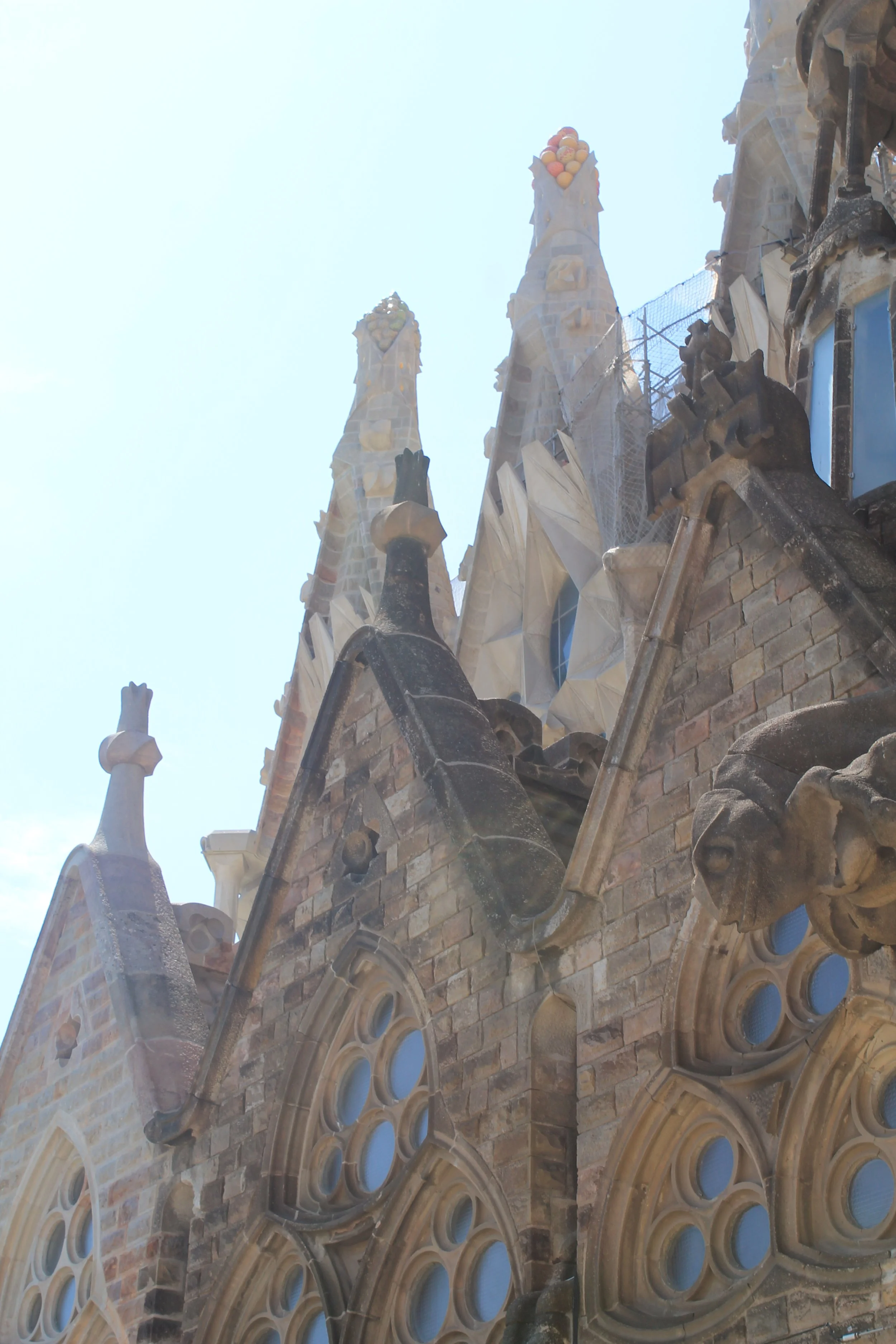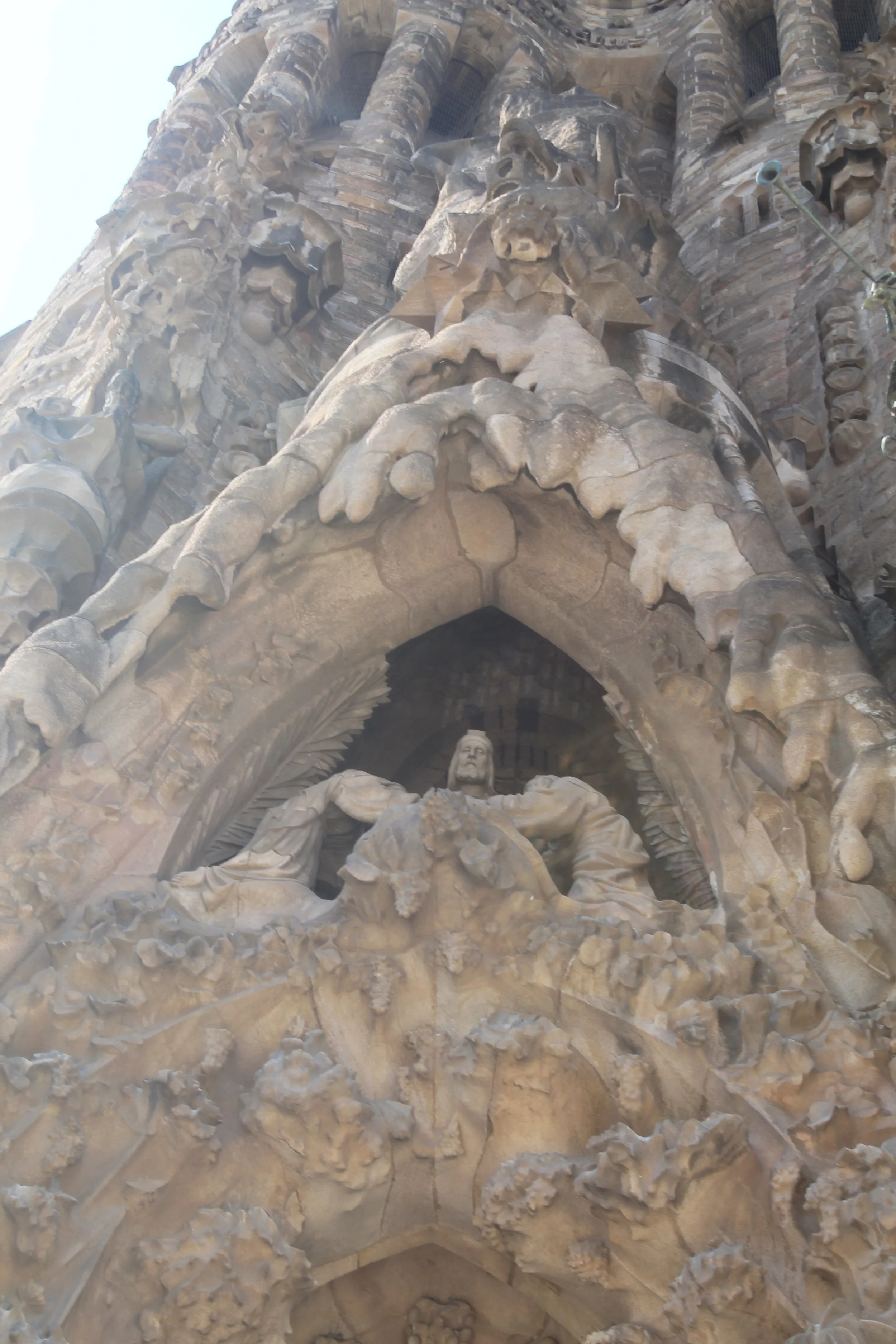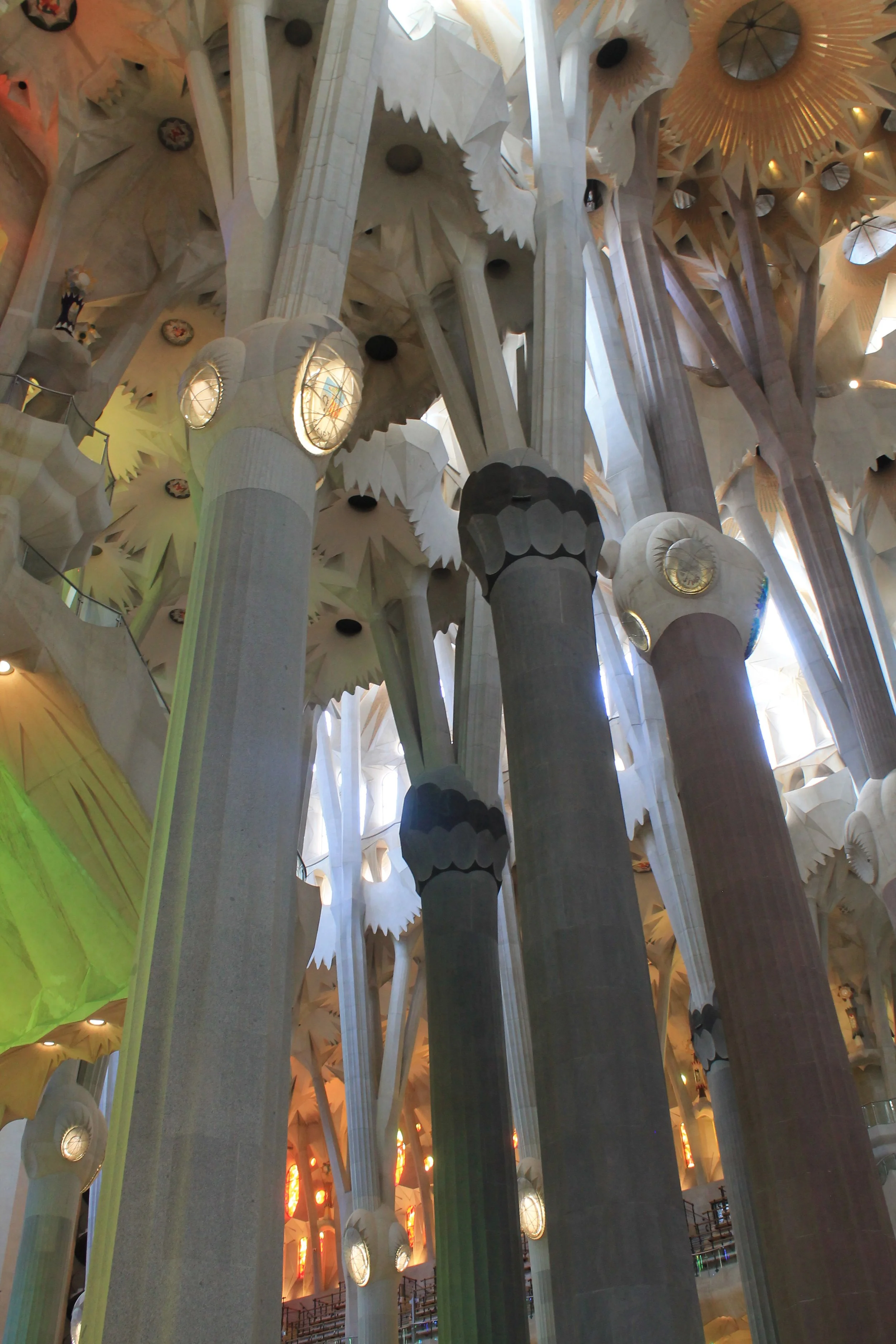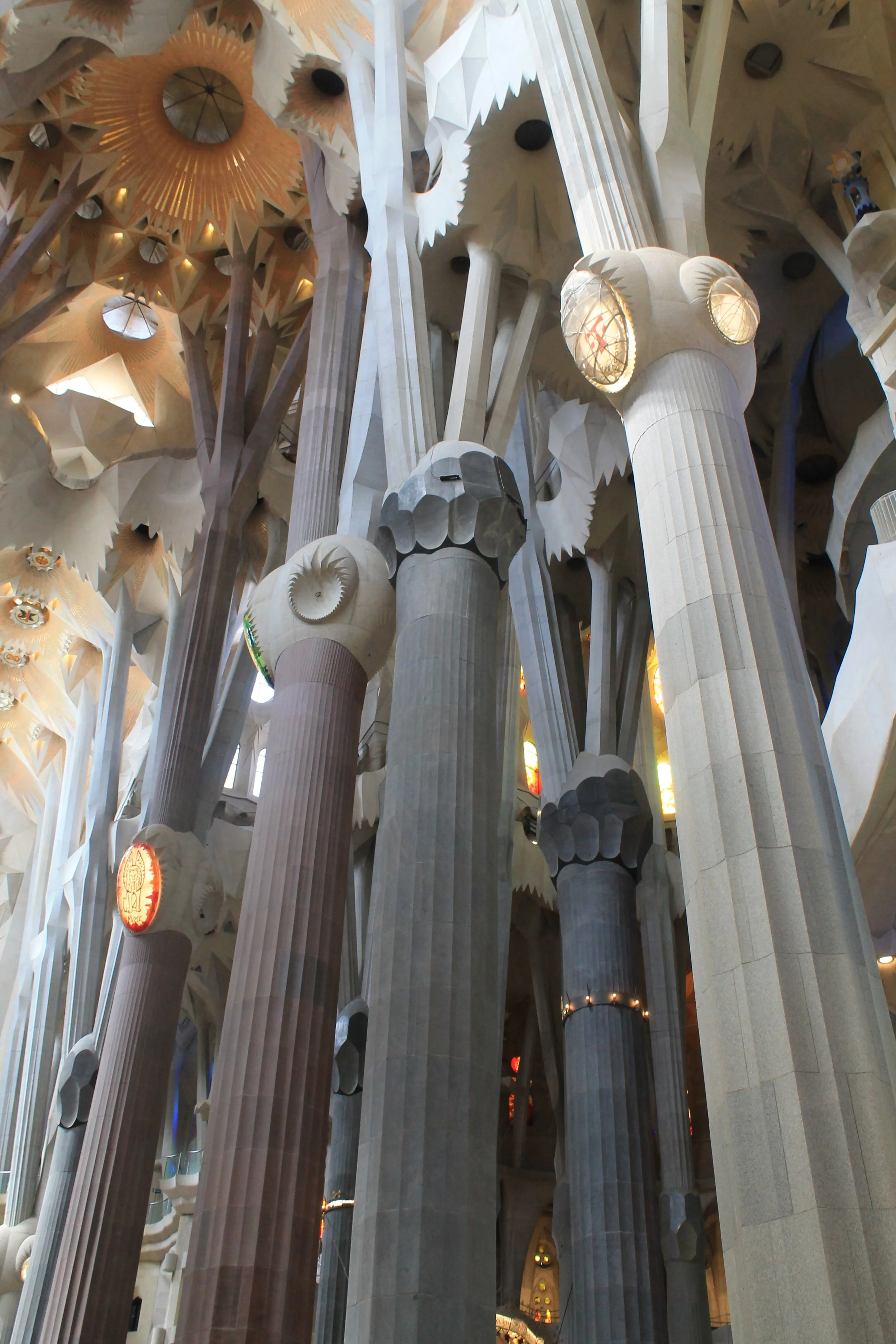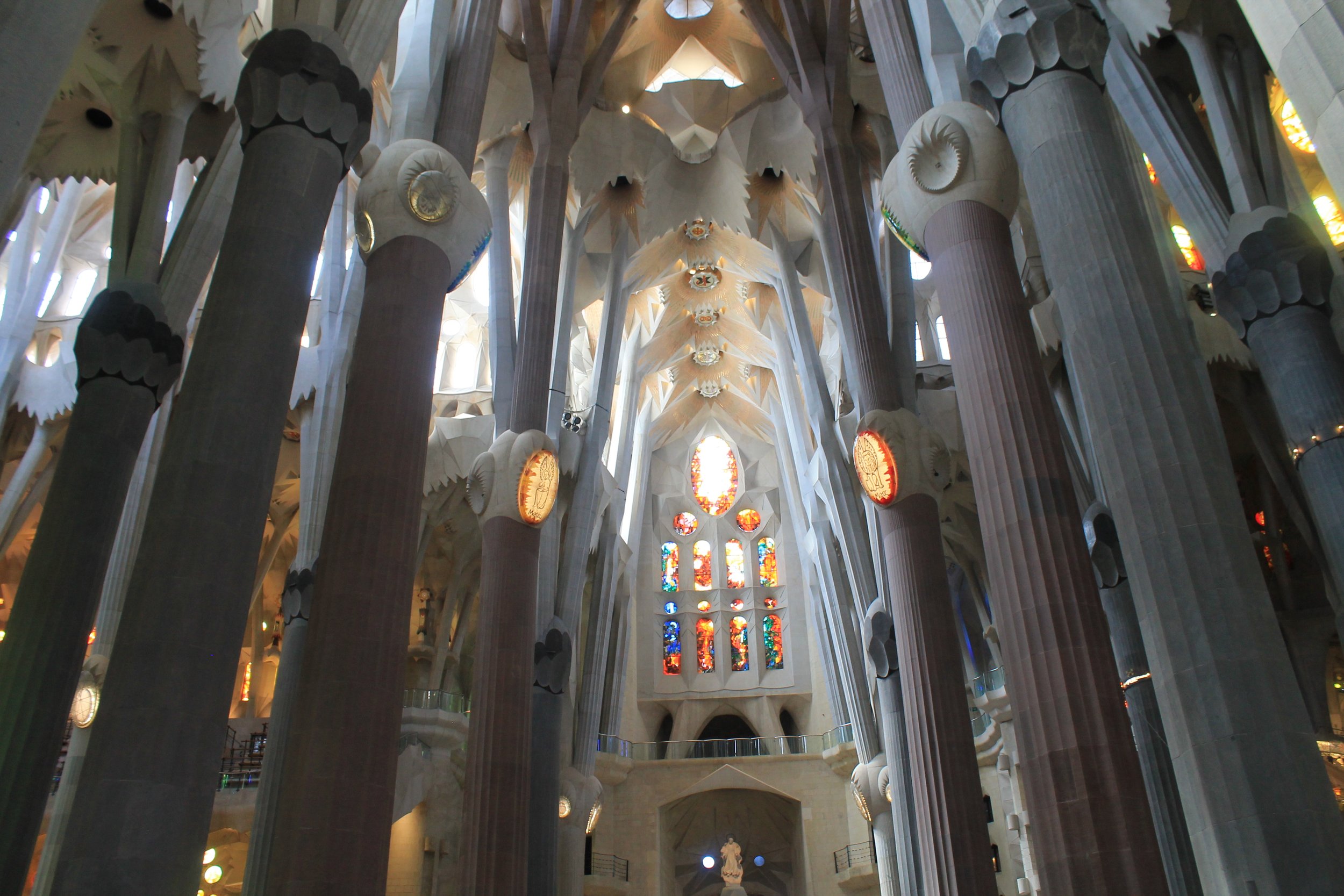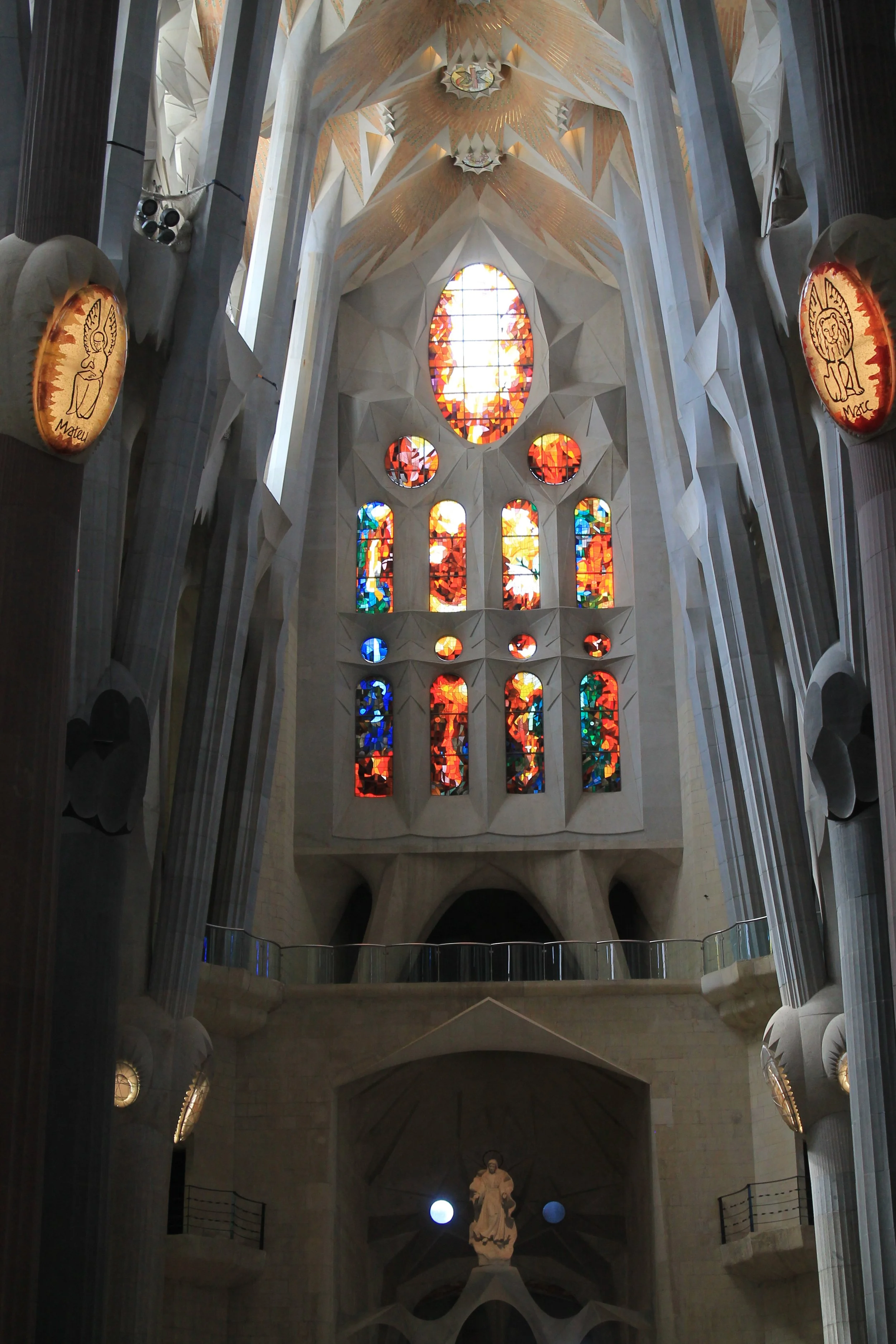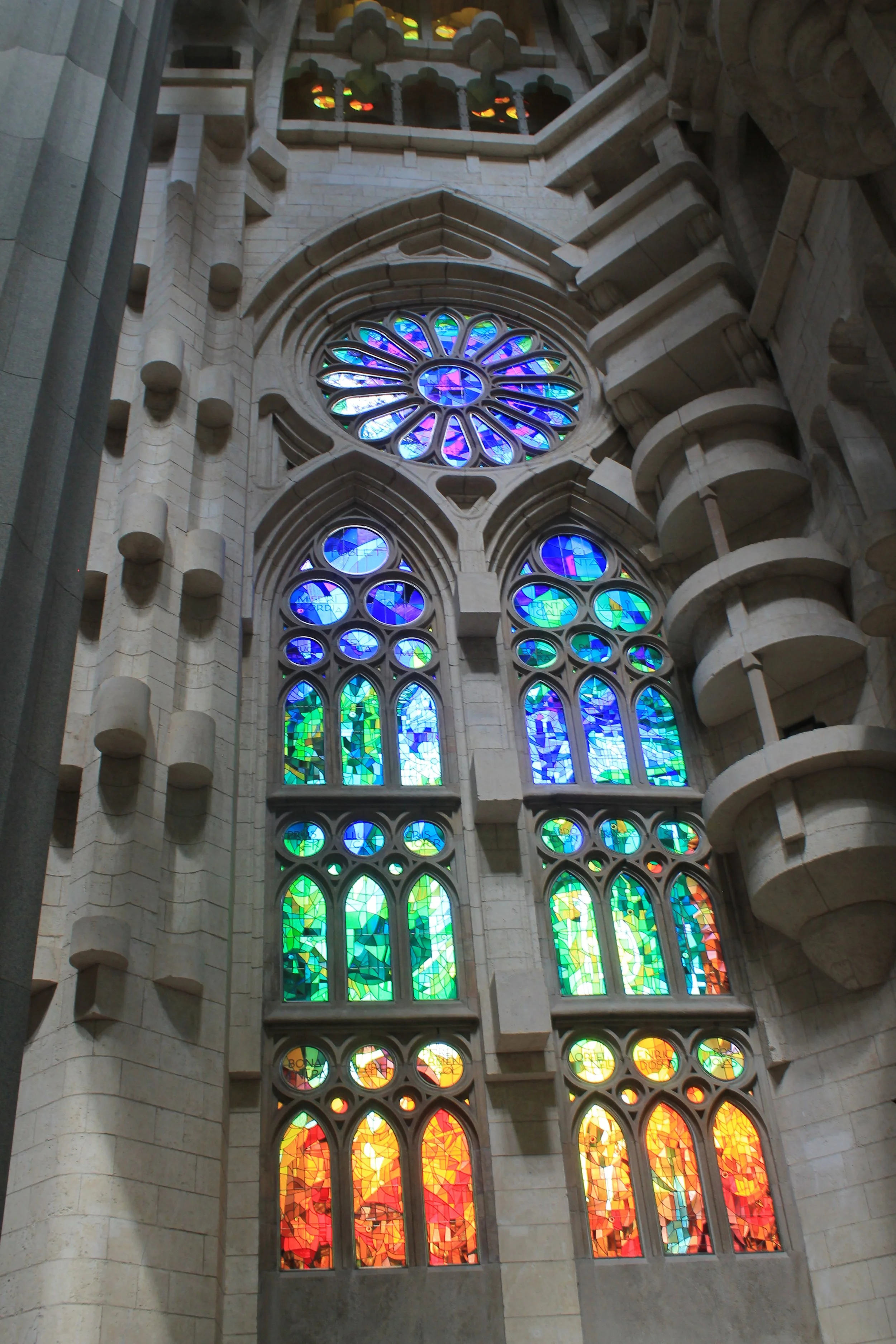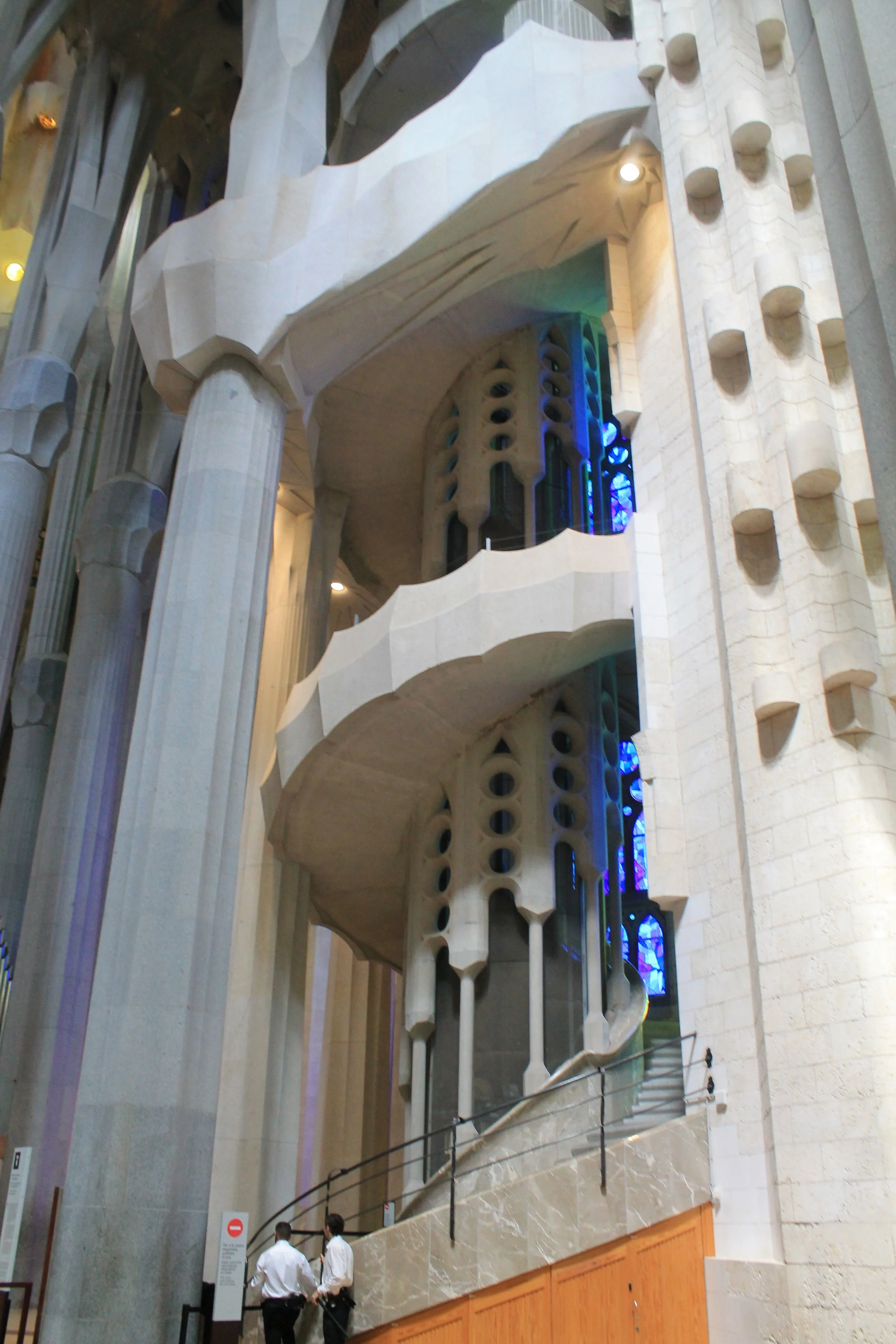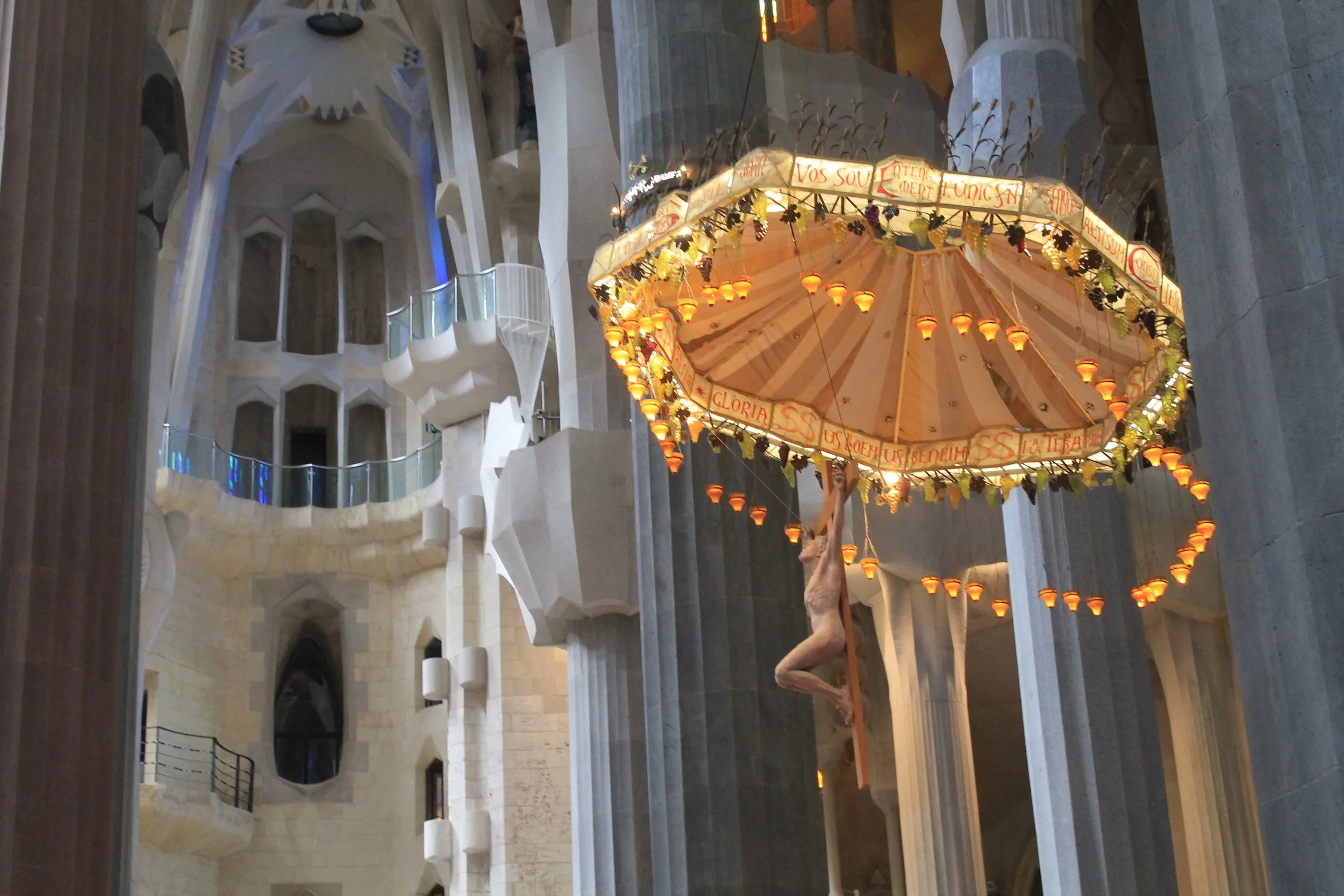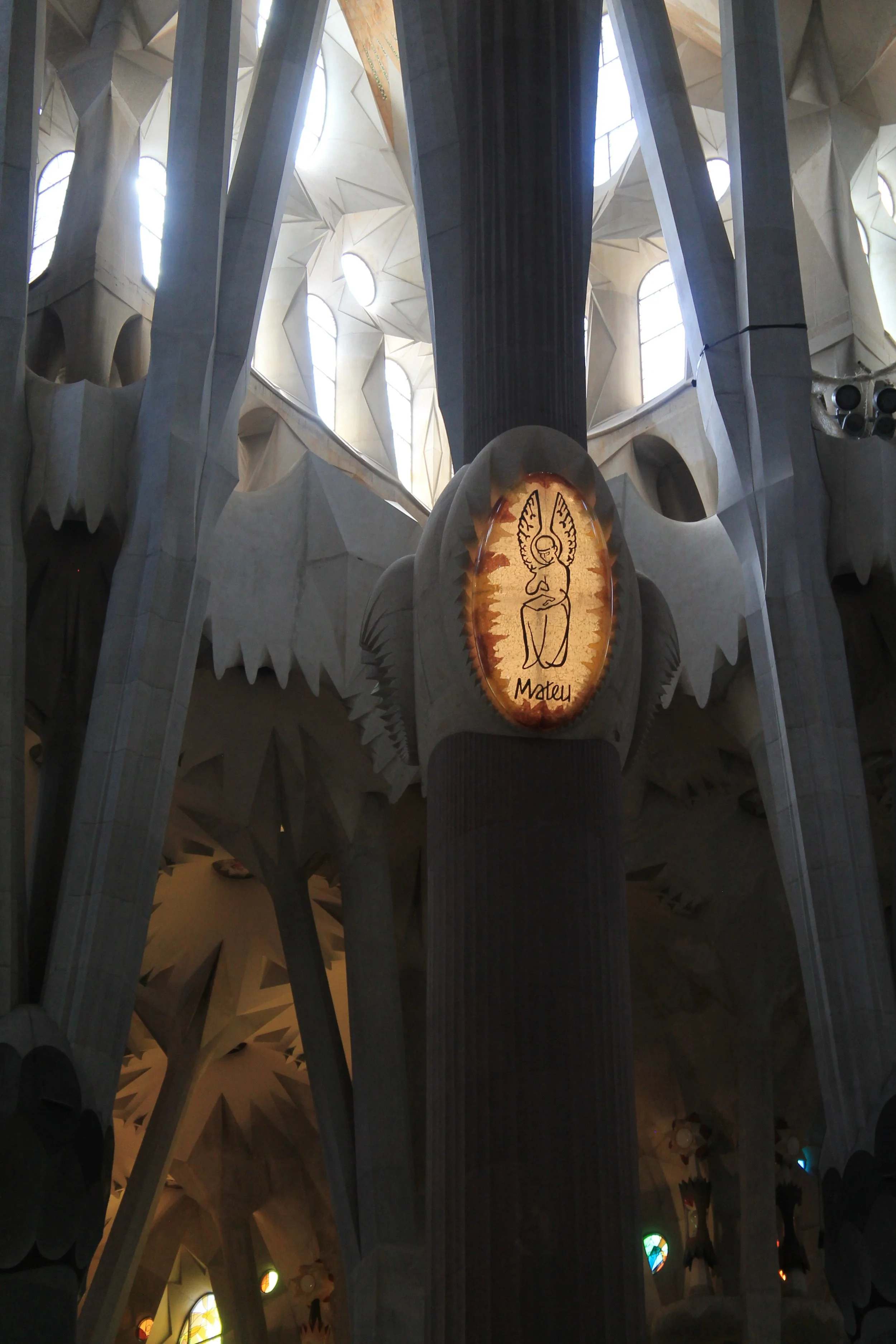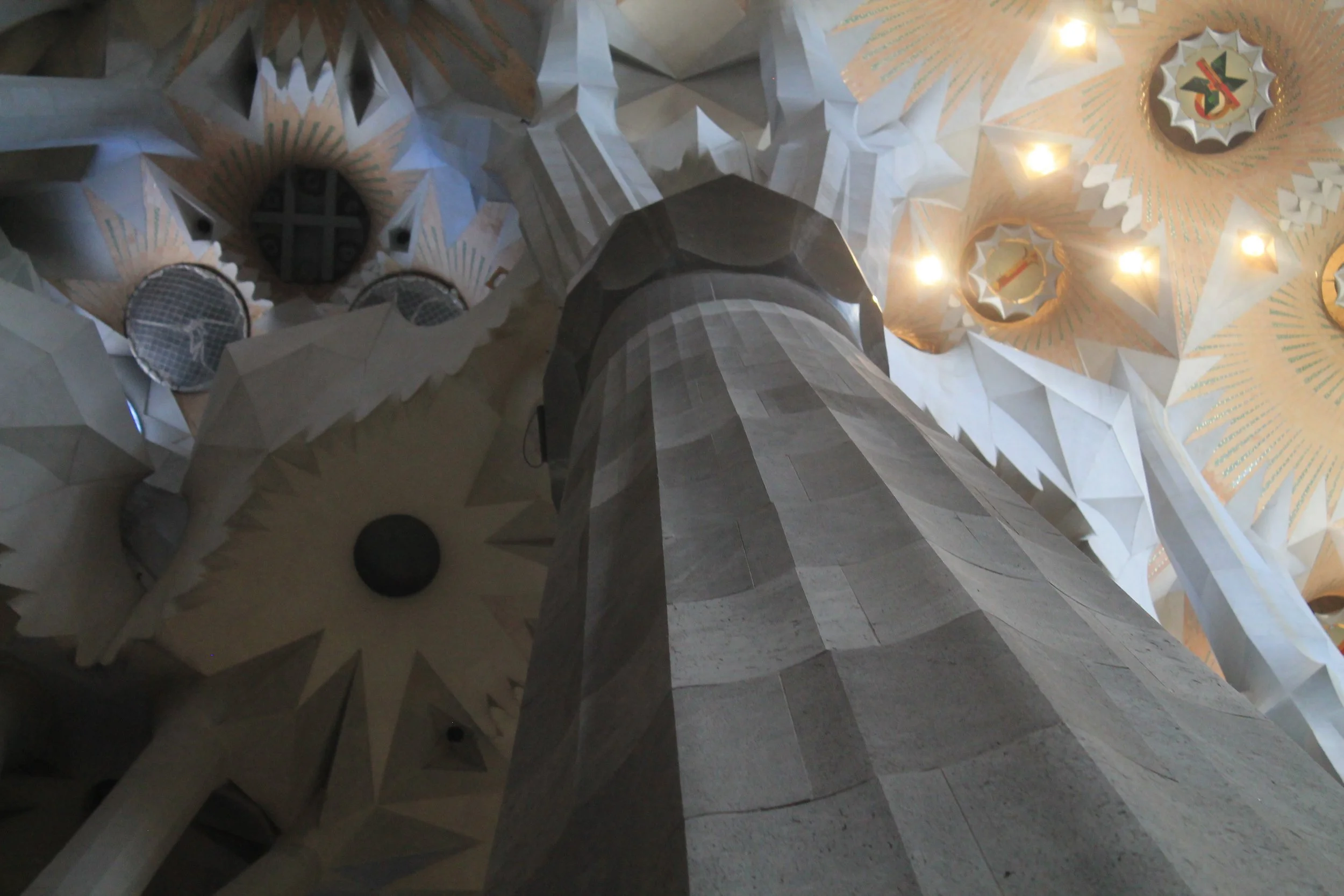
The Basílica de la Sagrada Família is a large unfinished church building in the Eixample district of Barcelona, Catalonia, Spain, and is currently the largest unfinished Roman Catholic church. Designed by the Catalan architect Antoni Gaudí (1852–1926), his work on Sagrada Família is part of a UNESCO World Heritage Site. On 7 November 2010, Pope Benedict XVI consecrated the church and proclaimed it a minor basilica.
On 19 March 1882, construction of the Sagrada Família began under architect Francisco de Paula del Villar. 1883, when Villar resigned, Gaudí took over as chief architect, transforming the project with his architectural and engineering style, combining Gothic and curvilinear Art Nouveau forms. Gaudí devoted the remainder of his life to the project and is buried in the crypt. At the time of his death in 1926, less than a quarter of the project was complete.
Relying solely on private donations, the Sagrada Família's construction progressed slowly and was interrupted by the Spanish Civil War. In July 1936, revolutionaries set fire to the crypt. They broke their way into the workshop, partially destroying Gaudí's original plans, drawings and plaster models, which led to 16 years of work to piece together the fragments of the master model. Construction resumed intermittent progress in the 1950s. Technological advancements such as computer-aided design and computerized numerical control (CNC) have since enabled faster progress, and construction passed the midpoint in 2010. However, some of the project's most significant challenges remain, including the construction of ten more spires, each symbolizing a crucial Biblical figure in the New Testament. It was anticipated that the building would be completed by 2026, the centenary of Gaudí's death, but this has now been delayed due to the COVID-19 pandemic.

